Motorhome Ireland: 8 Things We Learned
We’re recently back from a cracking four-week, self-guided motorhome tour of the Republic of Ireland. We focussed on the south-west of the country, taking our time to explore the southern end of the Wild Atlantic Way.
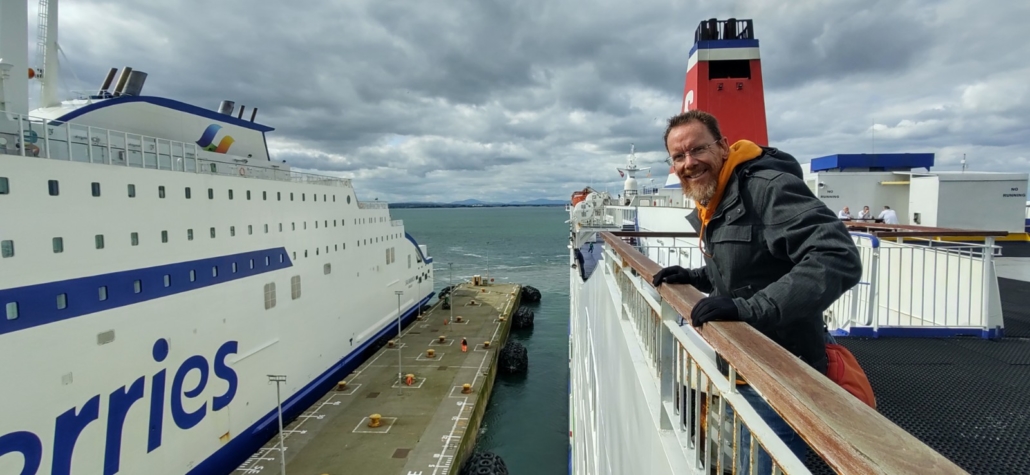
Although we’ve travelled across much of Europe, this is the first time we’ve visited Ireland in our motorhome, and we were taken aback by just how much we enjoyed it. We learned a few things on this trip too, which we wanted to share with anyone thinking about taking their motorhome to Ireland. At the bottom of the post you’ll also find a round up of our costs which may help you to plan a similar trip.
1. A Month Wasn’t Enough
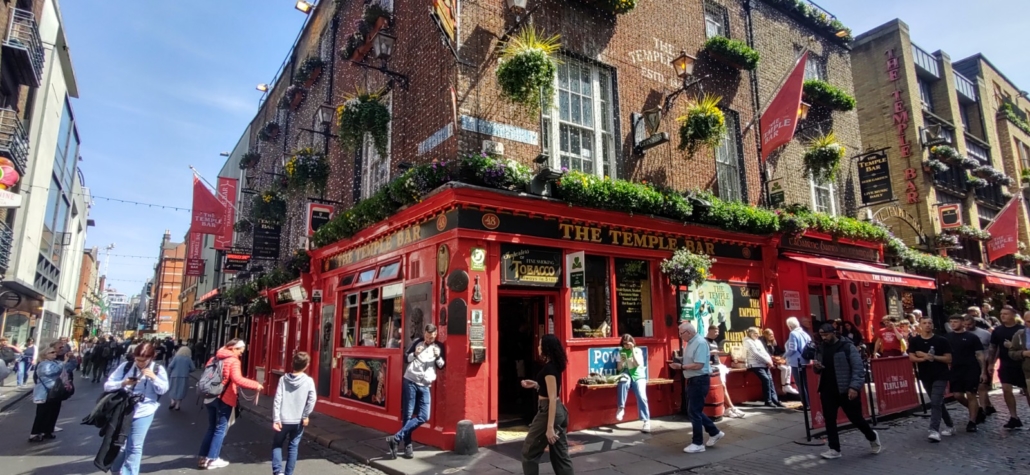
We needed to come home for personal reasons at the end of our four weeks, but we could have easily spent another month or two touring Ireland. We didn’t see any of Northern Ireland, spent only a few days inland, and got tons of recommendations for the more northerly parts of the Wild Atlantic Way, which we’d no time to explore.
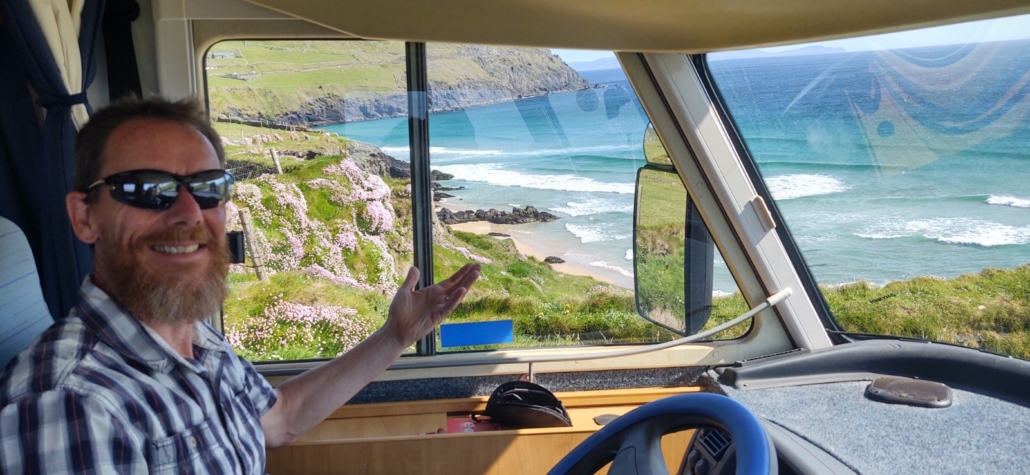
The weather in May was beautifully warm, and the overnight parking locations had enough space for us. Ireland has about 1/4 the population density of the UK. It felt much more laid back, with a slower pace of life and more easy-going attitudes on the roads, at campsites, in the pubs, for parking and life in general.
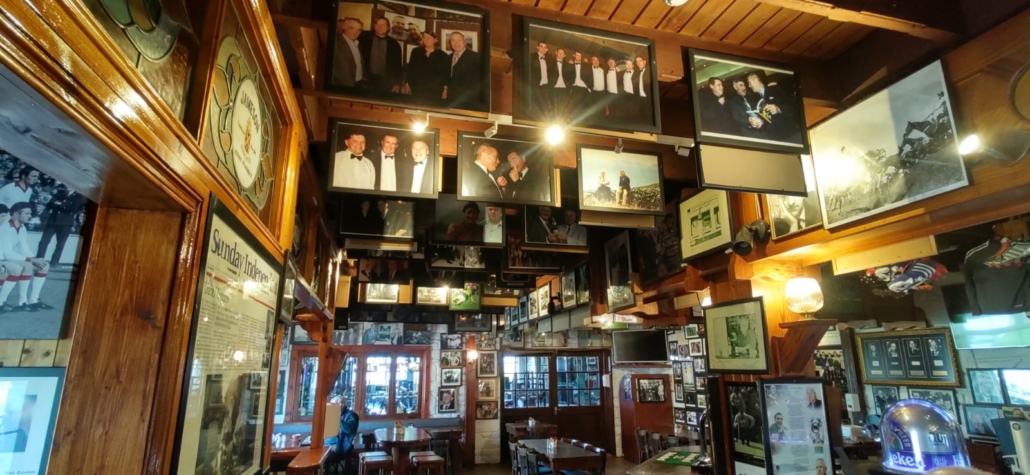
The point is: there’s an awful lot to see and do in Ireland, especially if you’re into slow travel. It you enjoy hiking in the mountains, like visiting castles and ancient forts, don’t mind a Guinness or two in characterful pubs, exploring frenetic cities like Dublin and generally kicking back, you’re in for a treat.
2. It Felt Abroad!
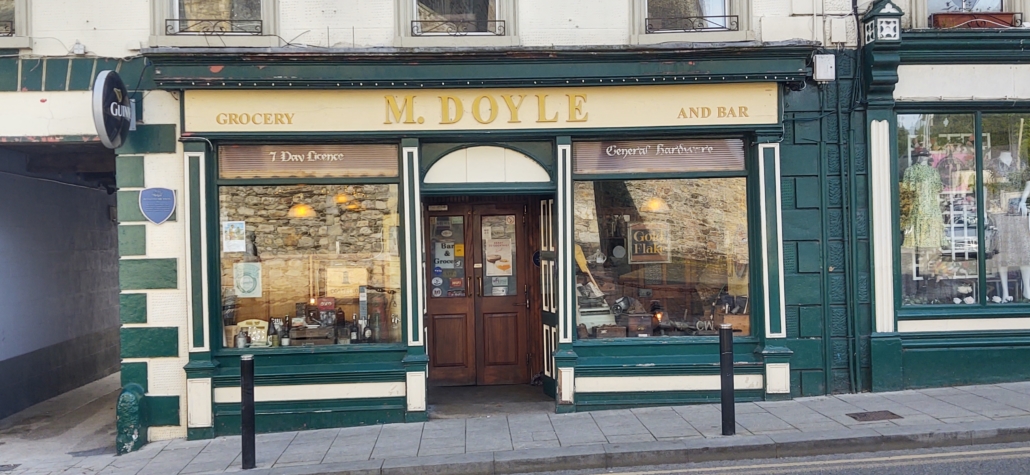
Alright, this might sound a bit weird, but without really thinking about it we’ve seen Ireland as not being as ‘abroad’ as say France or Italy. They drive on the left over there, and everyone speaks English. In Northern Ireland they even use the pound, and the speed limits are in mph. As UK citizens, we don’t need to show our passport to enter the island of Ireland. So, it’s all pretty much like Britain, right?
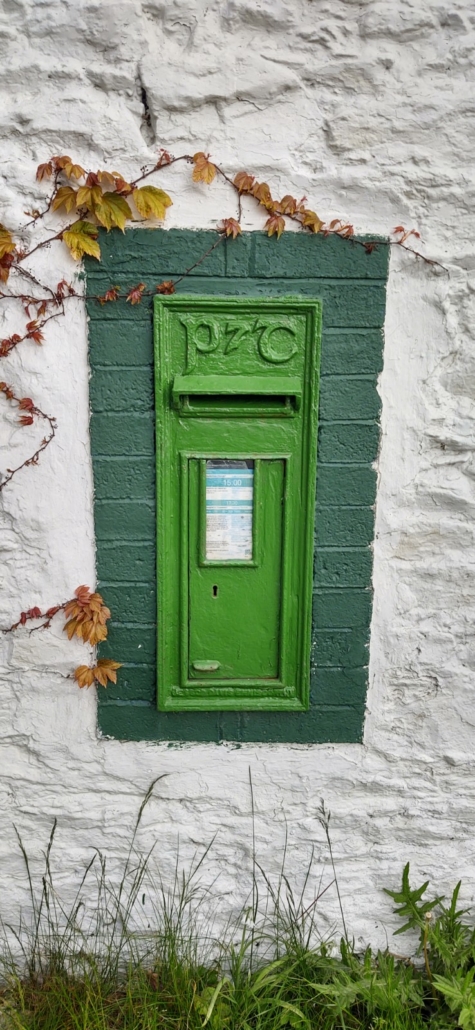
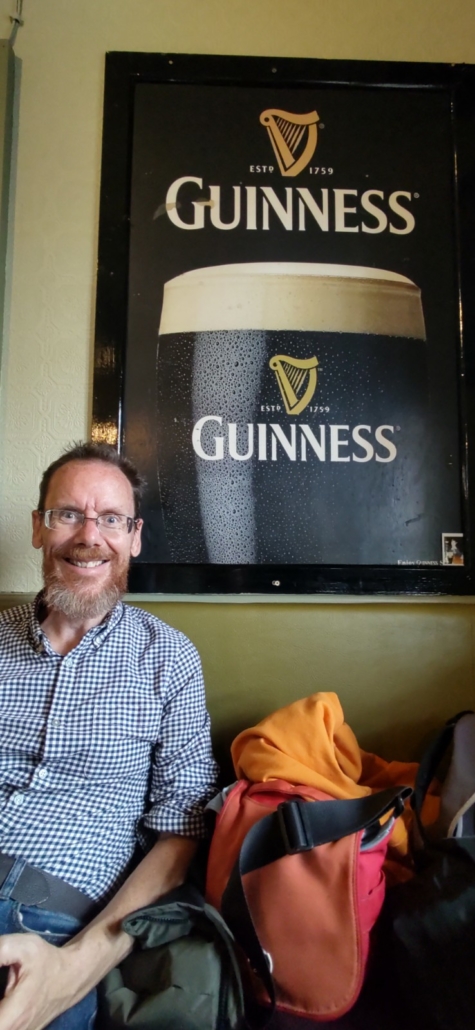
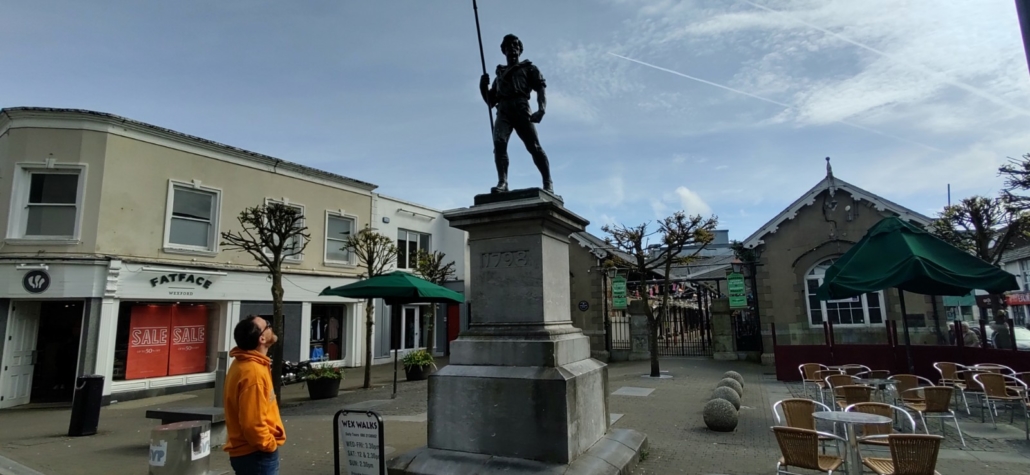
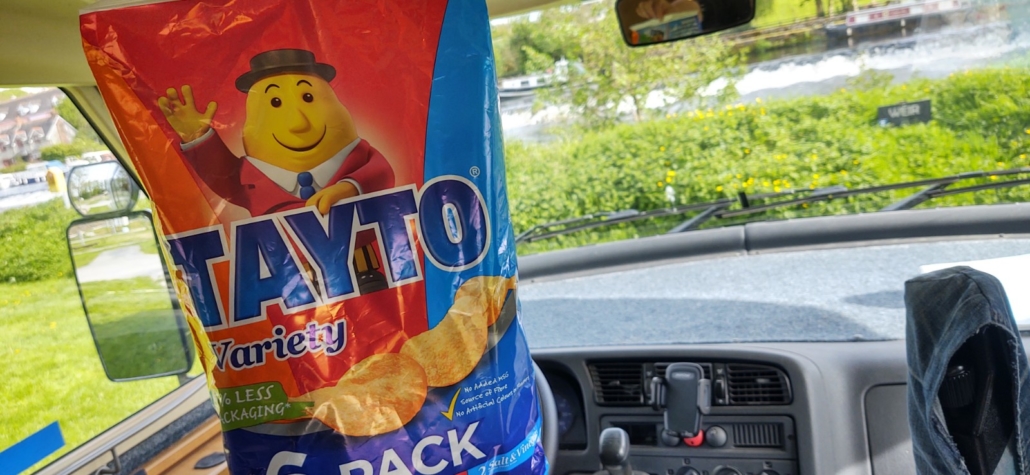
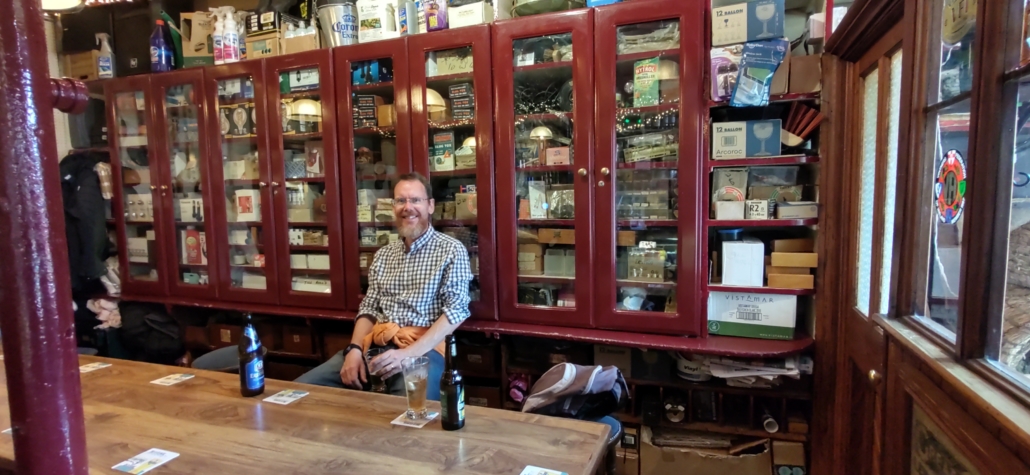
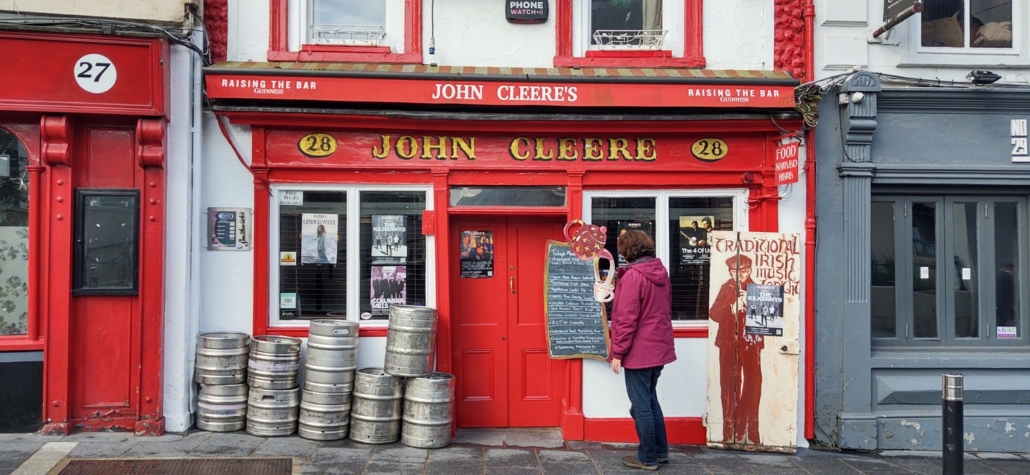
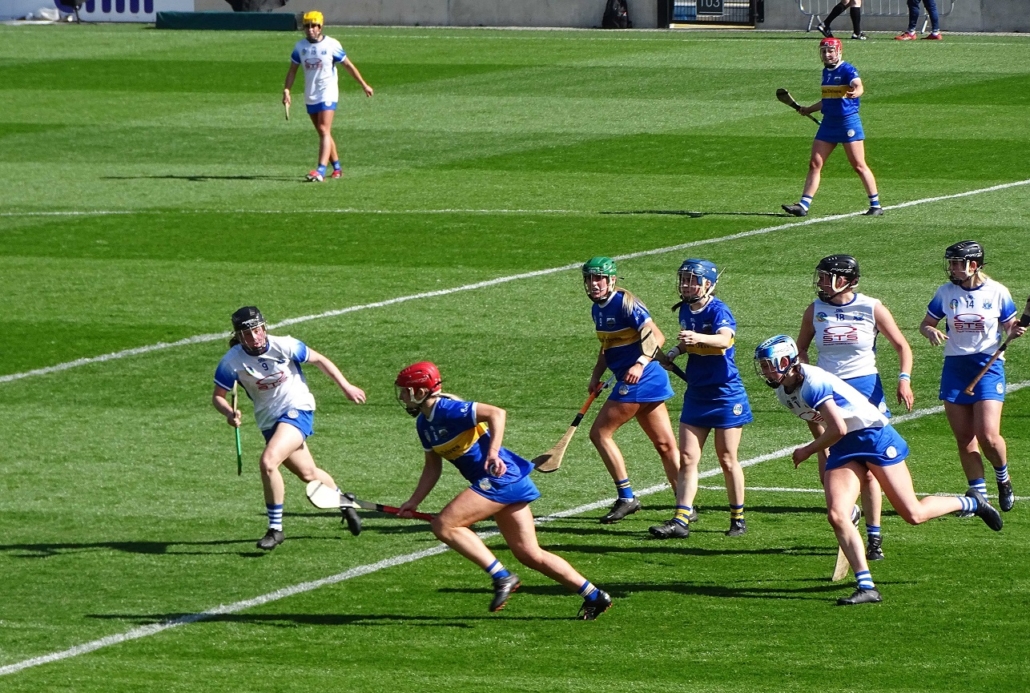
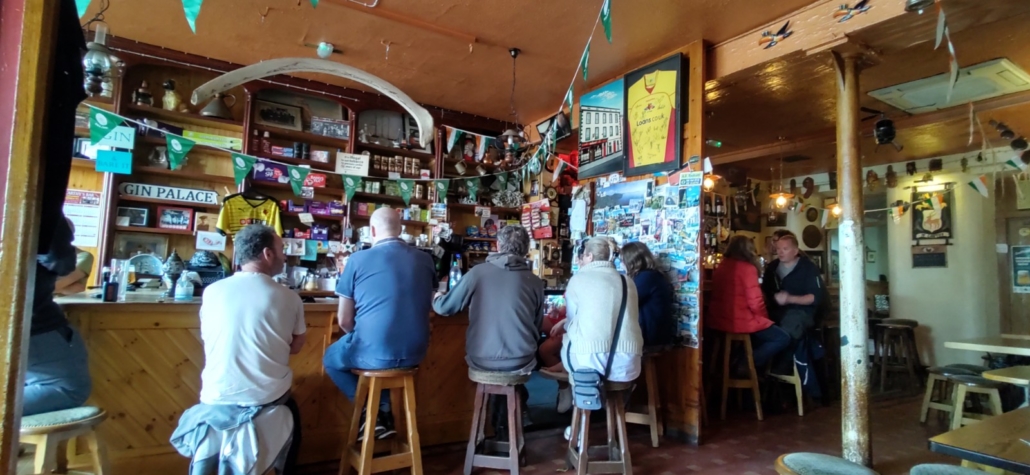
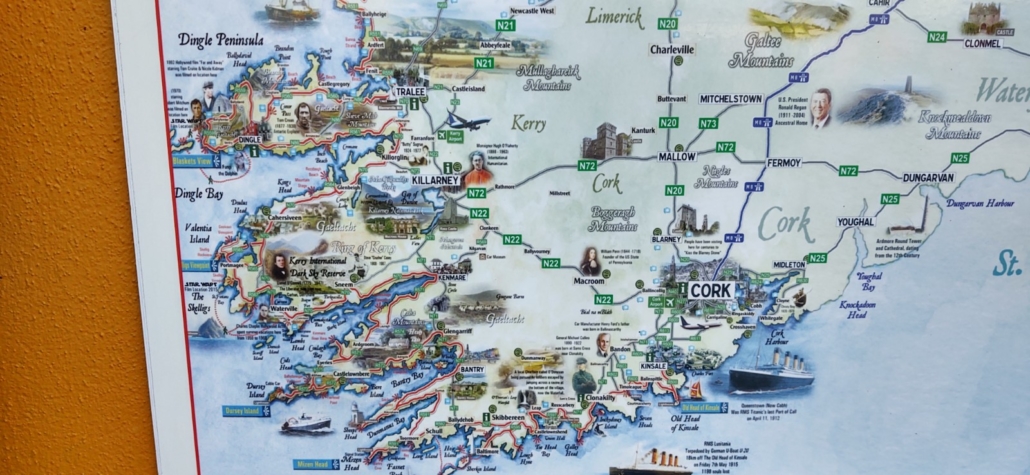
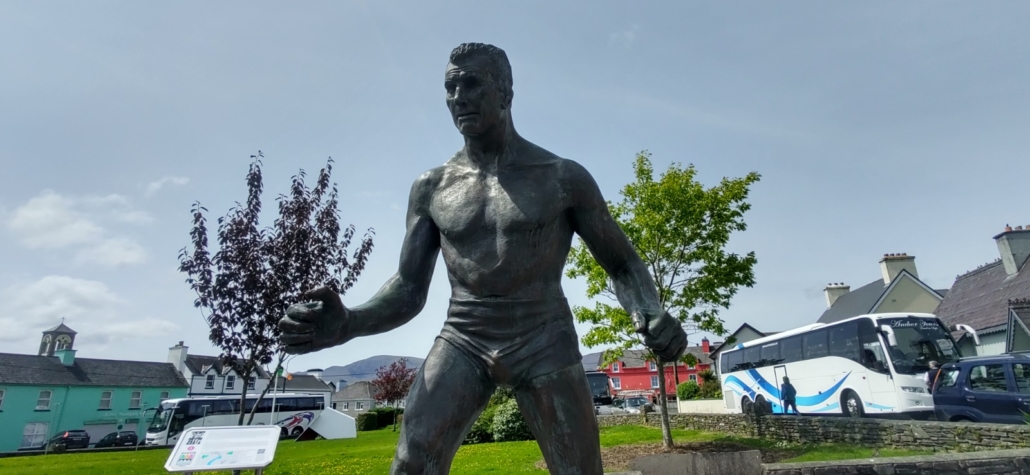
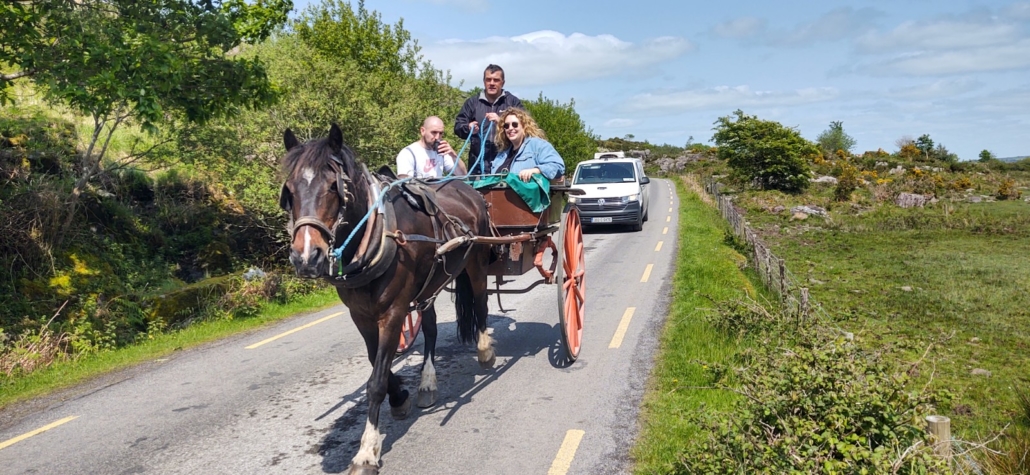
Ah, no. It didn’t take long to start to grasp the fact The Republic of Ireland at least is very much not Britain!
The post boxes were all repainted from red to green back in the 1920s for a start. A deliberate act to show just how ‘un British’ those in the new Irish Free State (later to become the Republic) felt themselves. The speed limit signs have the letters km/h written on each of them. There are statues and memorials everywhere to local heroes killed fighting for independence from the British. All the signs are in both English and Irish. And the hurling sticks are everywhere too!
Go to the Republic and even without reading up or popping into a museum or heritage centre, and you’ll soon get a good grasp of the fact this is far from Britain.
3. There Were Tons of Overnight Options
We stayed in pub stops, dedicated motorhome parking areas, aires, campsites and wild camping spots in Ireland. We were touring during May, so campsites which might close over winter were all open.
Many of our stops were free, and the stops we paid for were all well worth it. Car parks were either free or about €10 for 24 hours. Campsites ranged from €15 to €38.50 a night for two people, the higher price was with hook-up. Sites were generally very relaxed about the time we left our pitch on departure day. Other motorhome travellers wild-camp every night in Ireland, never paying for a night in a campsite or aire.
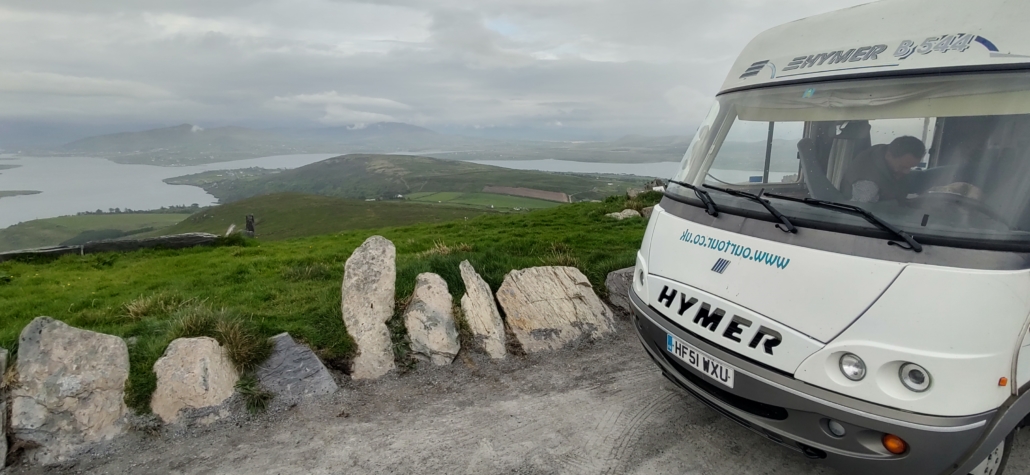
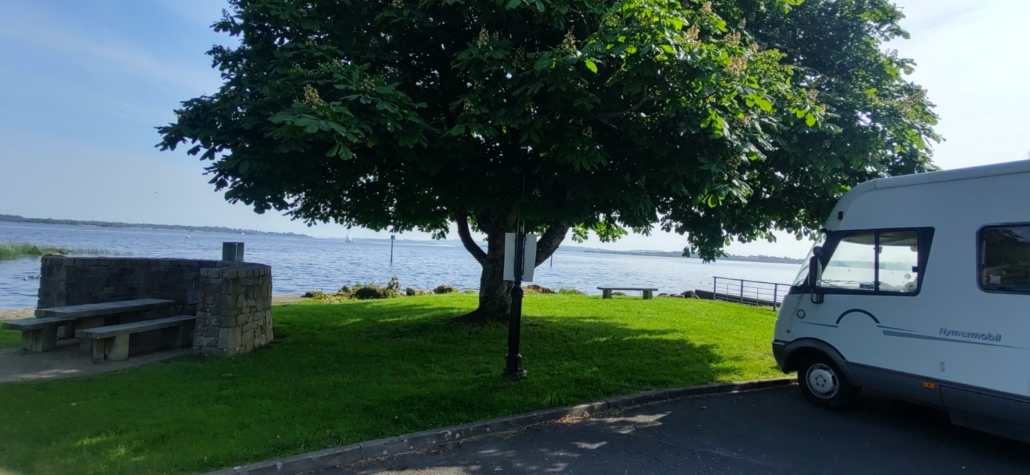
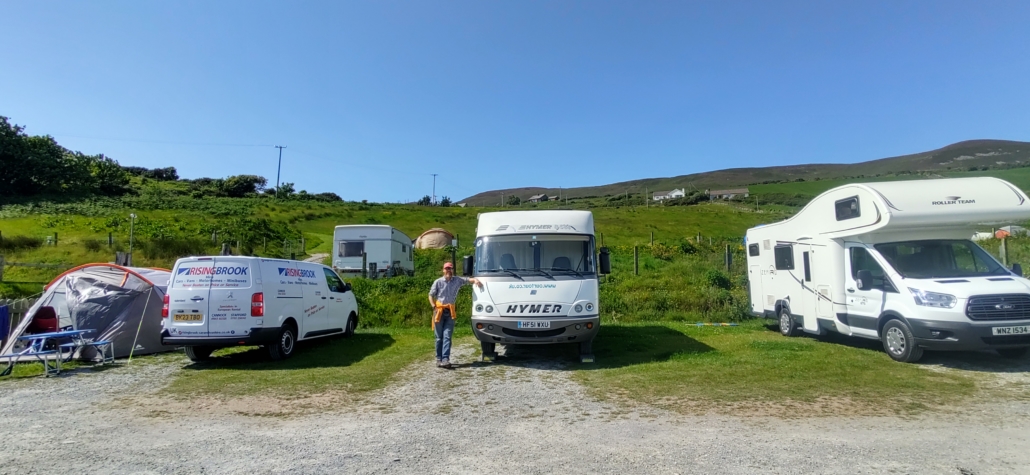
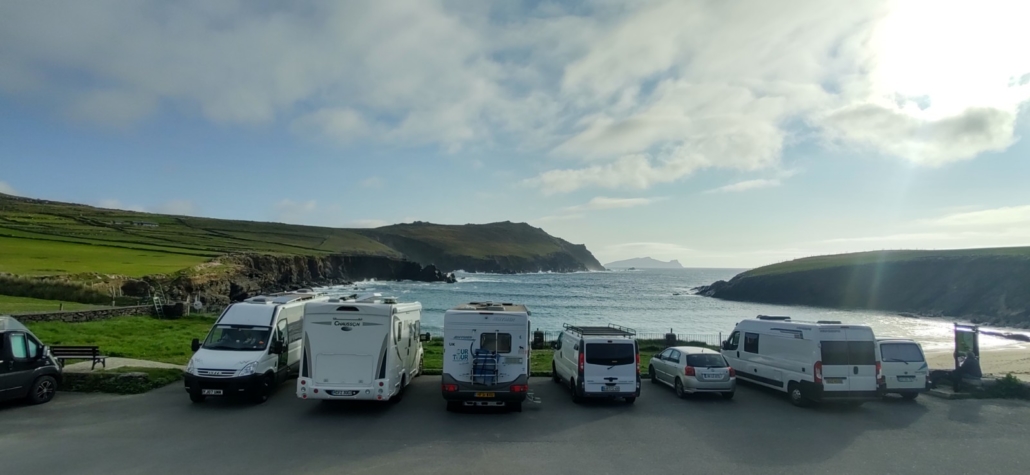
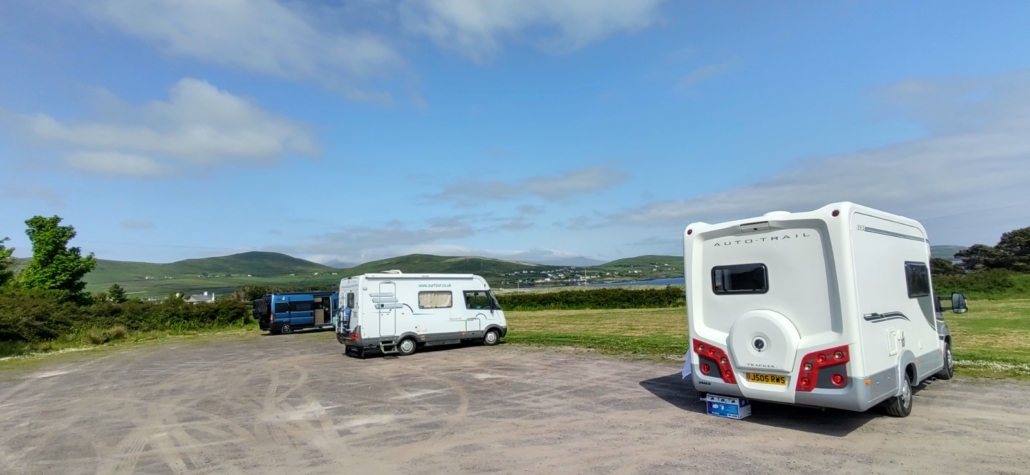
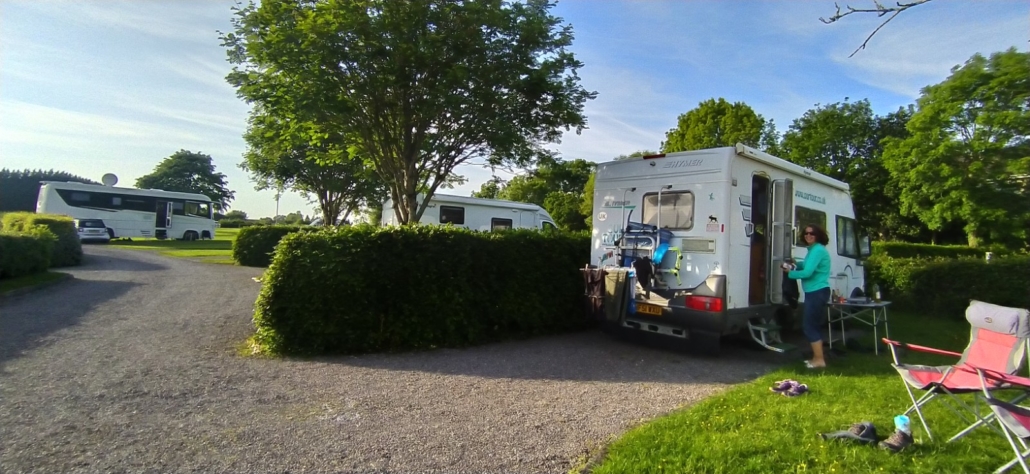
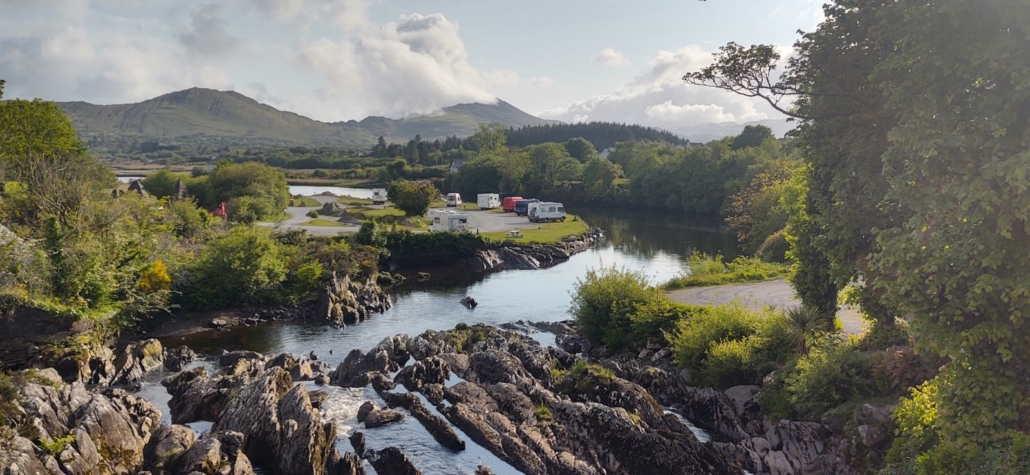
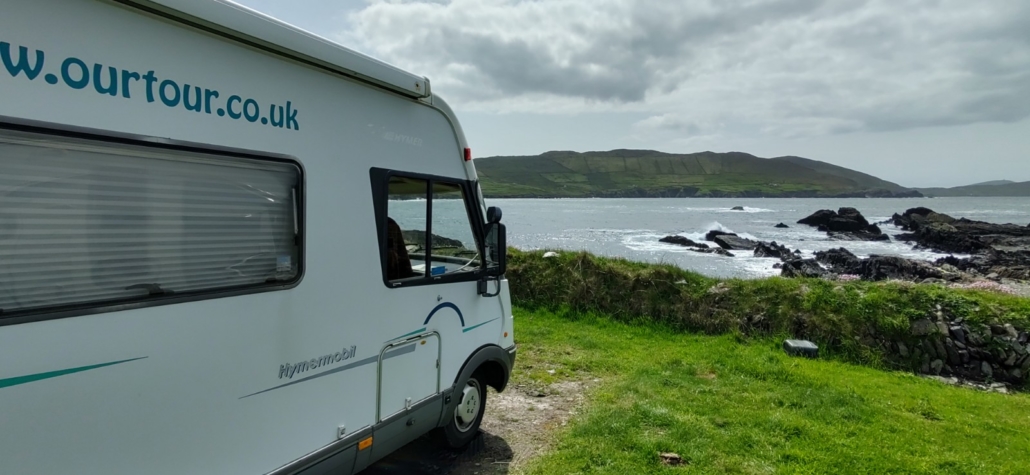
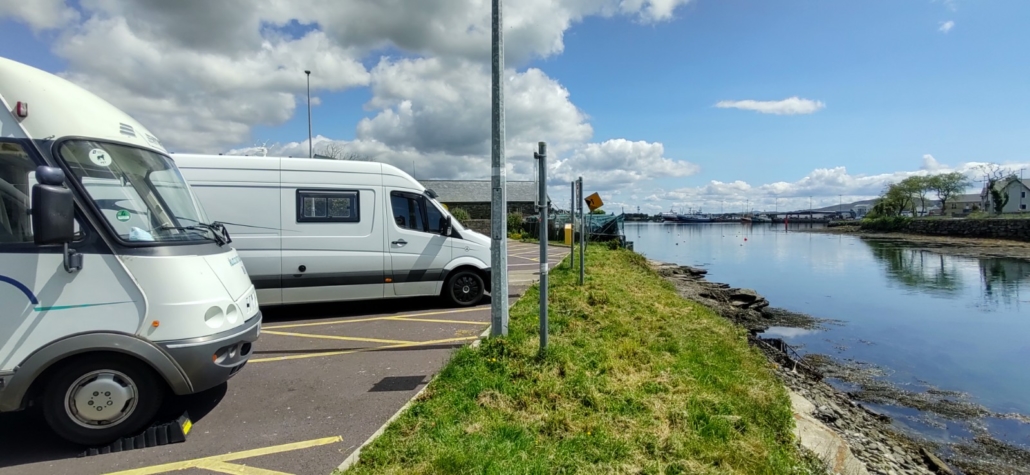
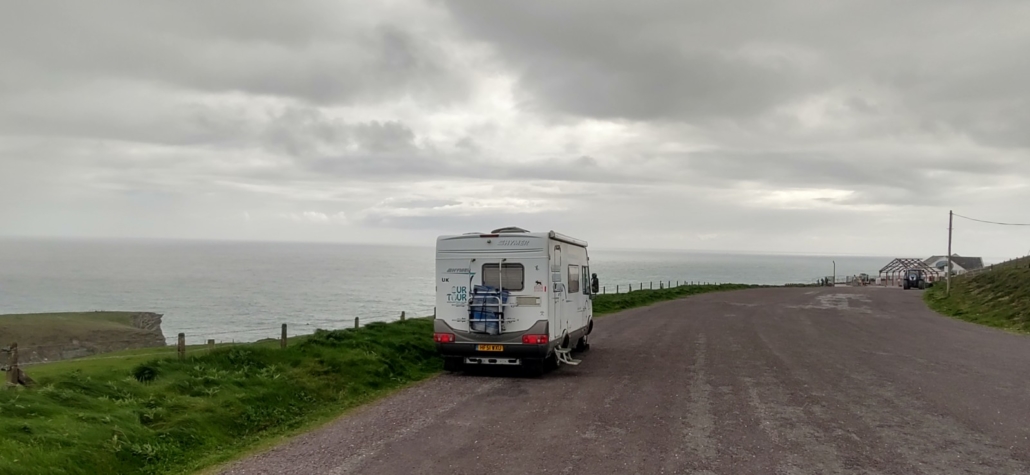
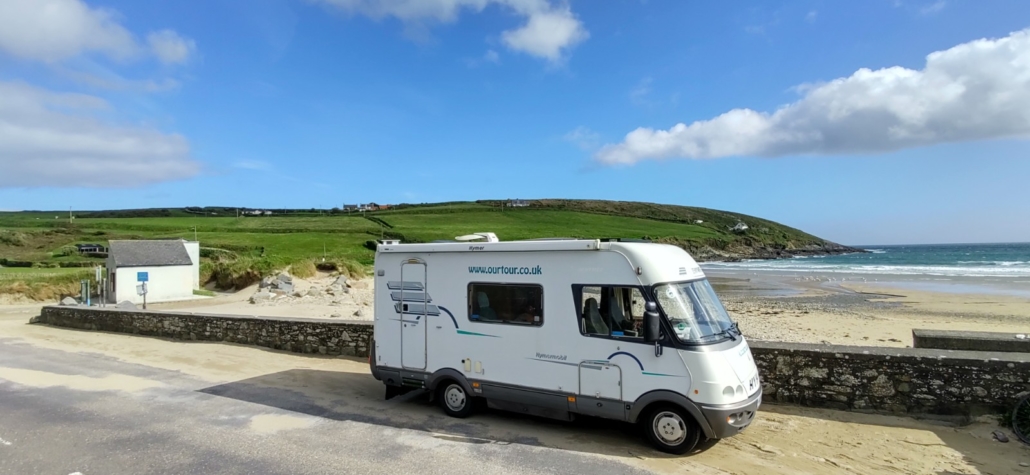
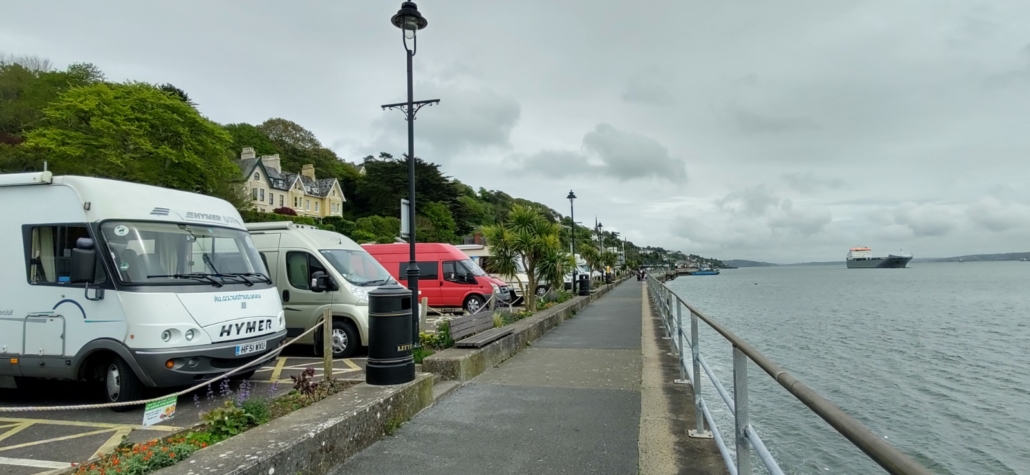
We sourced all of our locations from the park4night app, and they’re shown on the interactive map below. Just click on any stopover location for the GPS co-ordinates and a link to the blog post we wrote while we were there.
4. The Landscapes Are Epic
We once stayed for a few weeks in Nerja (Spain) next to a Swedish couple who spoke very highly of the Wild Atlantic Way. They’d made a book, with fantastic drone-shot photos of the coast. The pics were great, but couldn’t do the place justice. Neither can our pictures below. You have to go see it with your own eyes, feel the wind from the sea, hear the crashing waves and get a sense of scale from atop the giant cliffs.
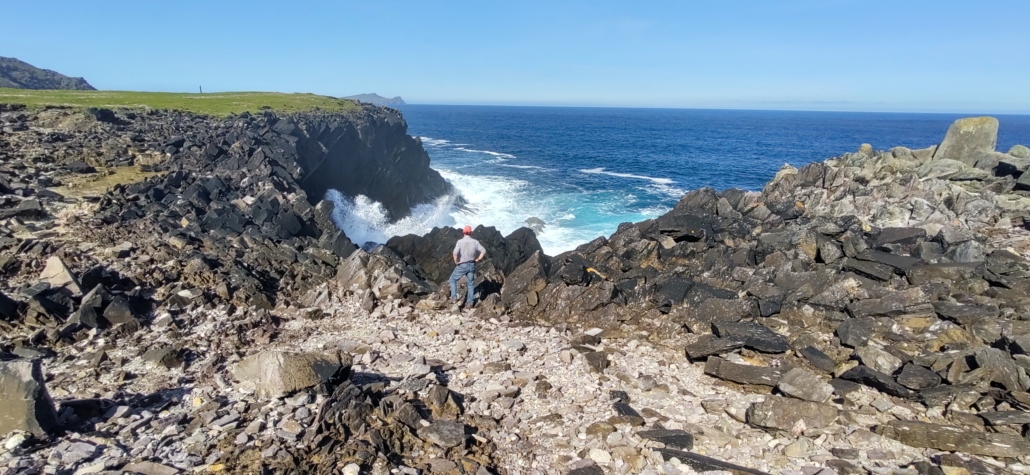
It’s quite a place, and that’s just the coastline. We didn’t spend much time inland, but when we did we drove over beautiful mountain passes and parked by a huge inland lake.
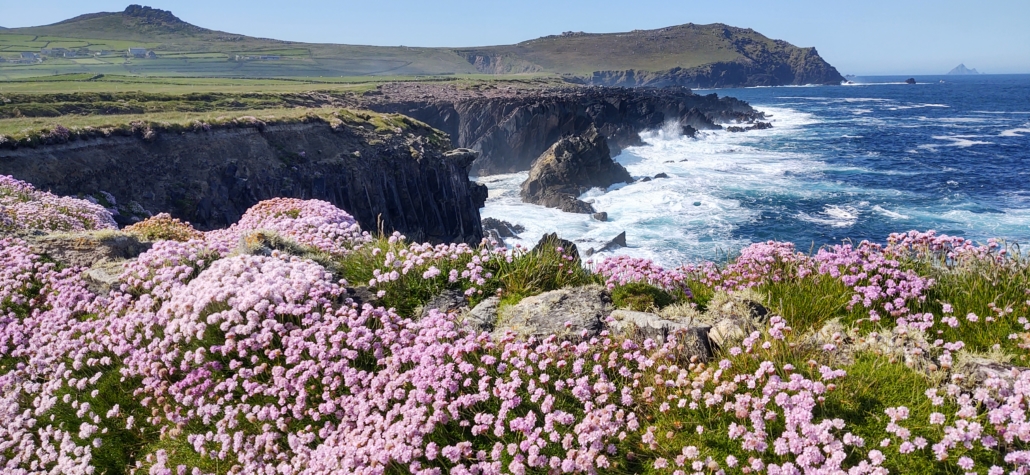
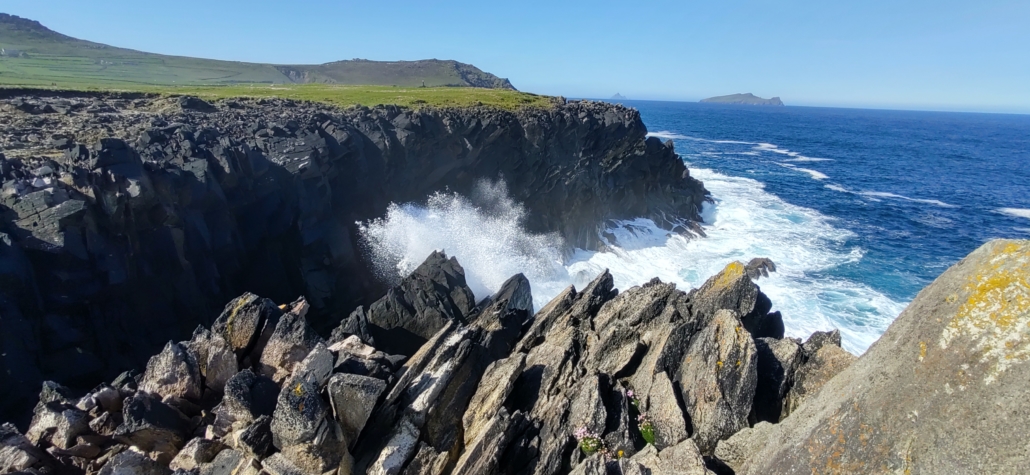
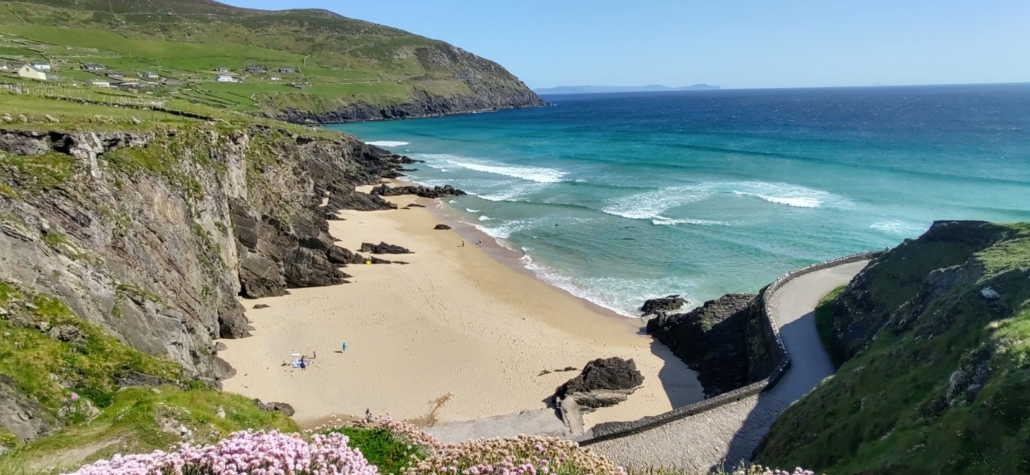
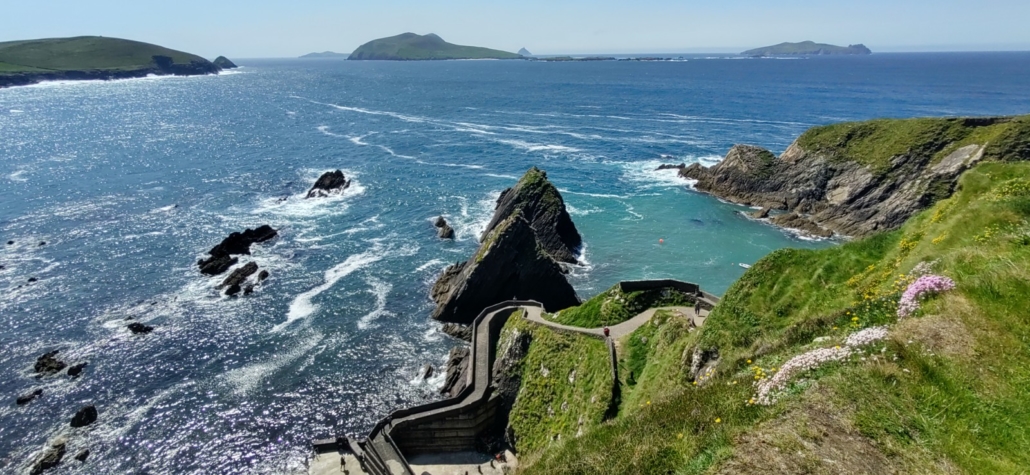
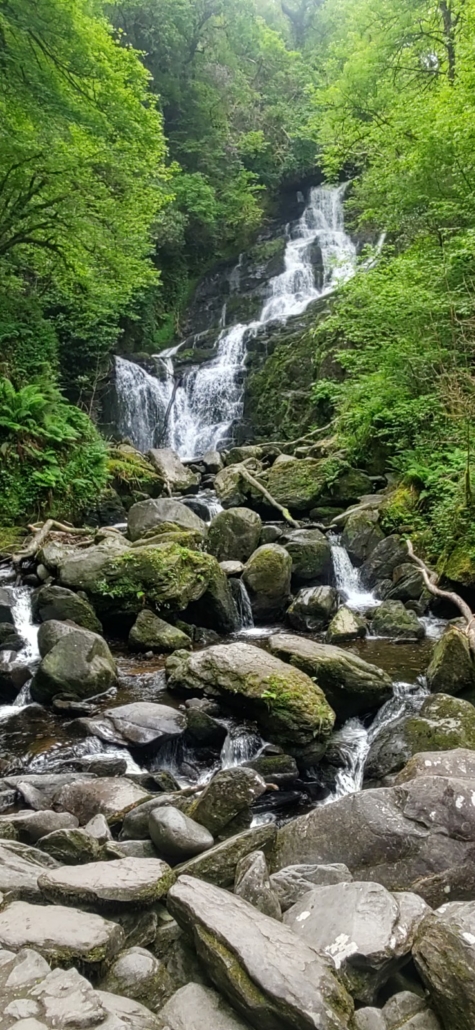
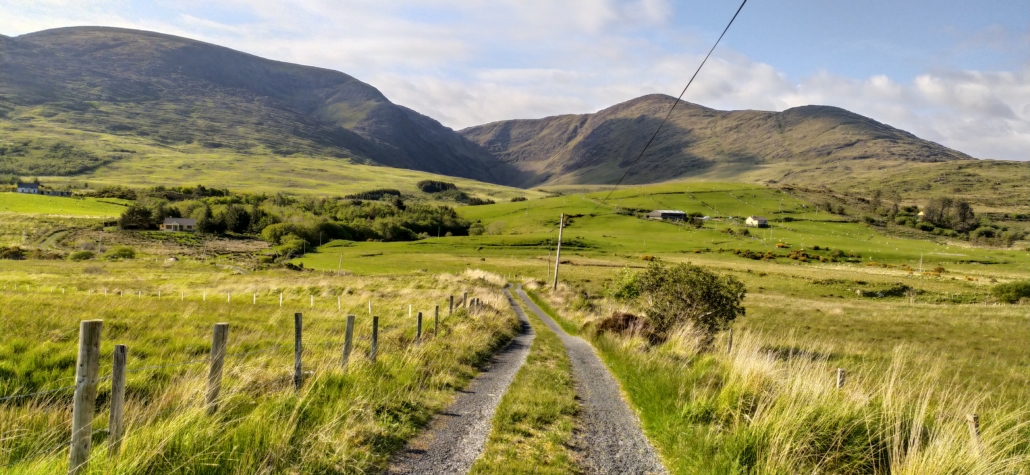
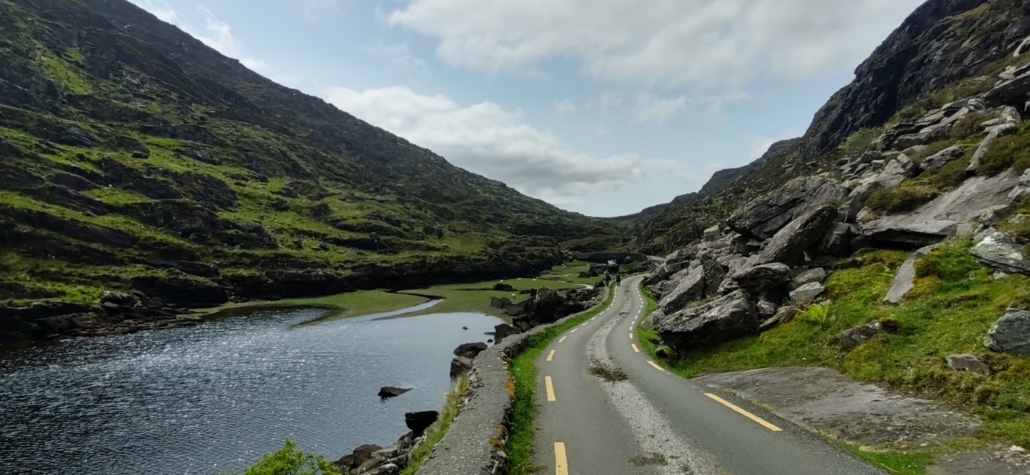

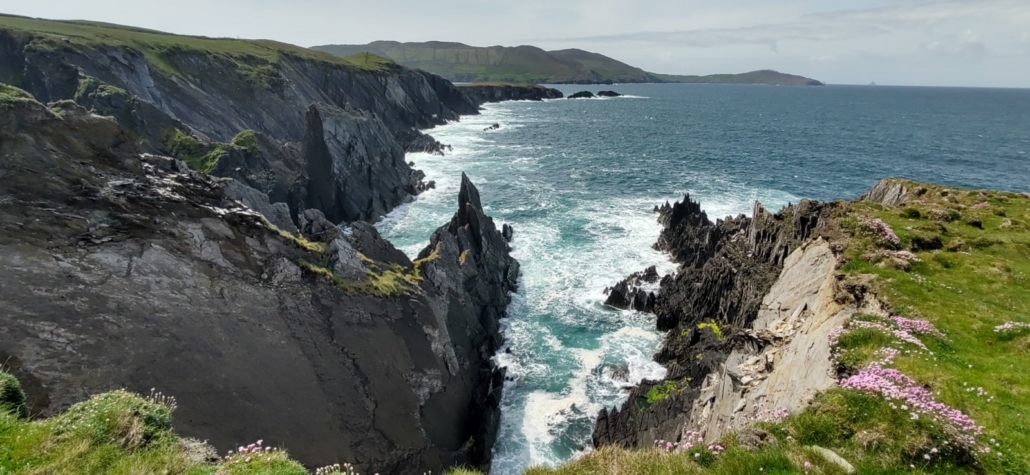

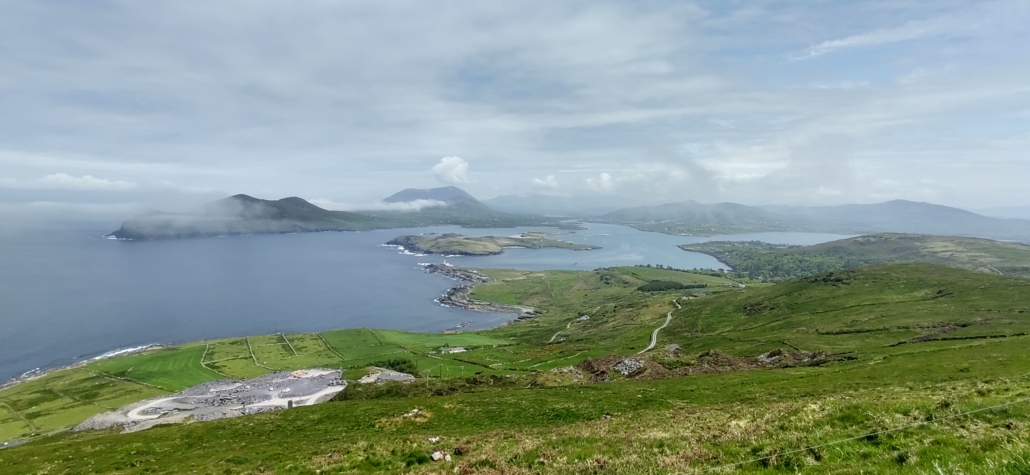

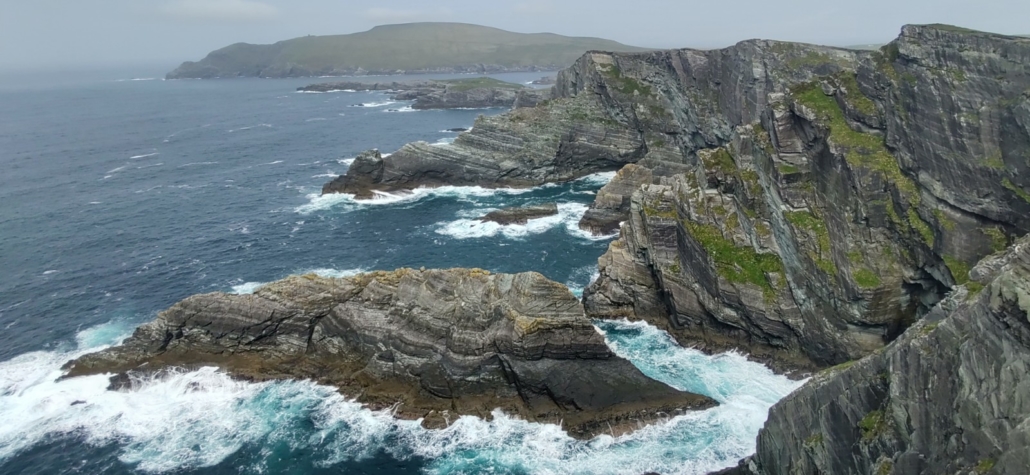

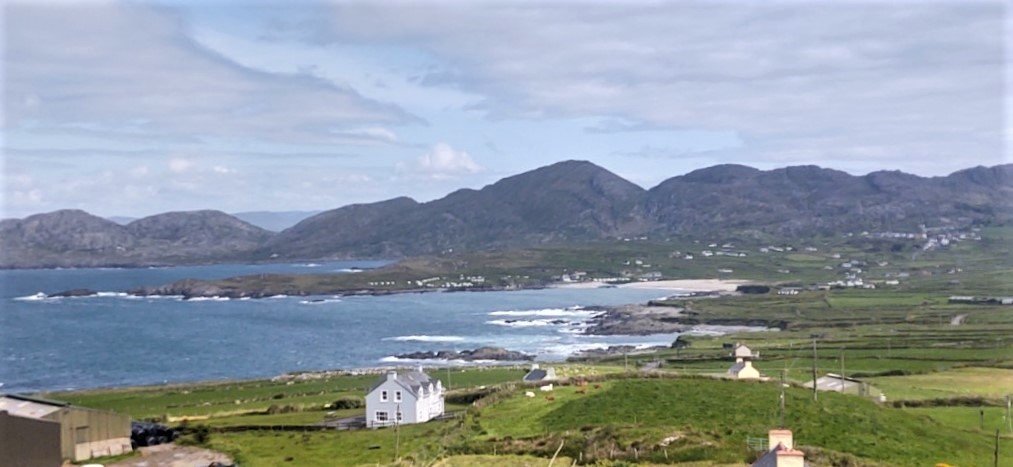

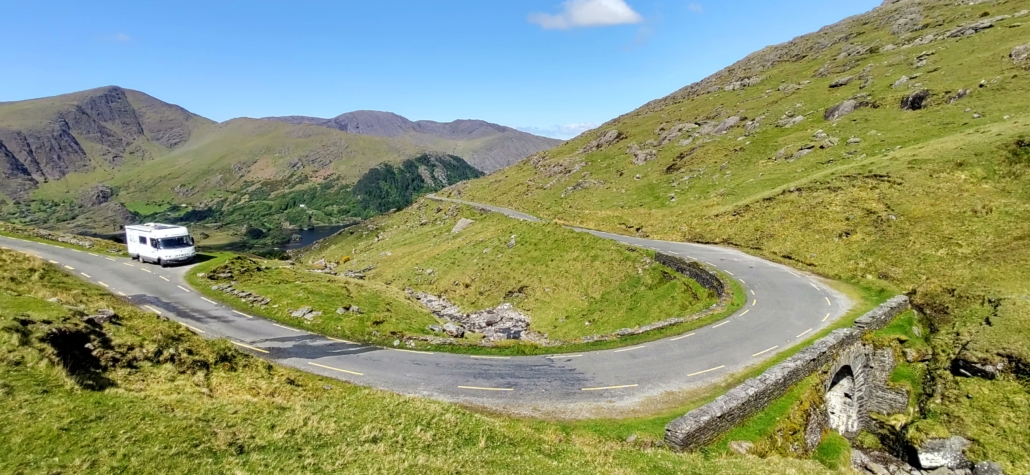

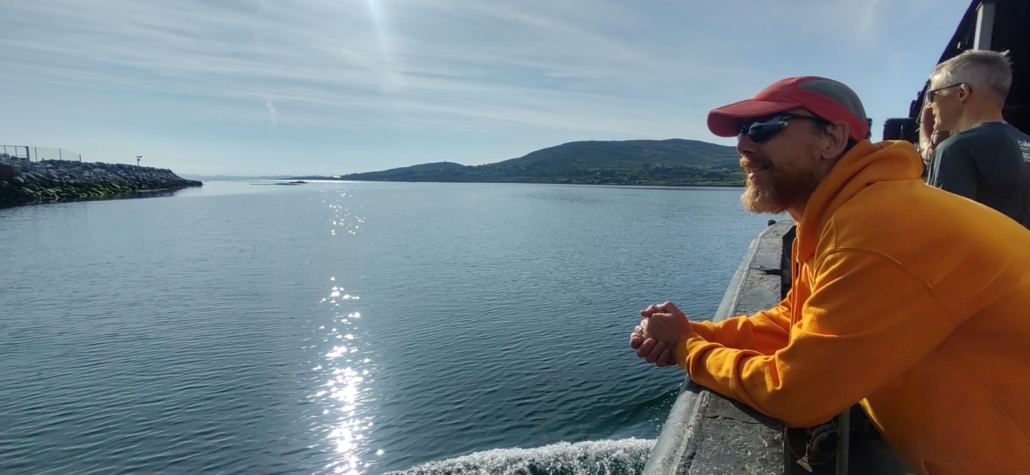

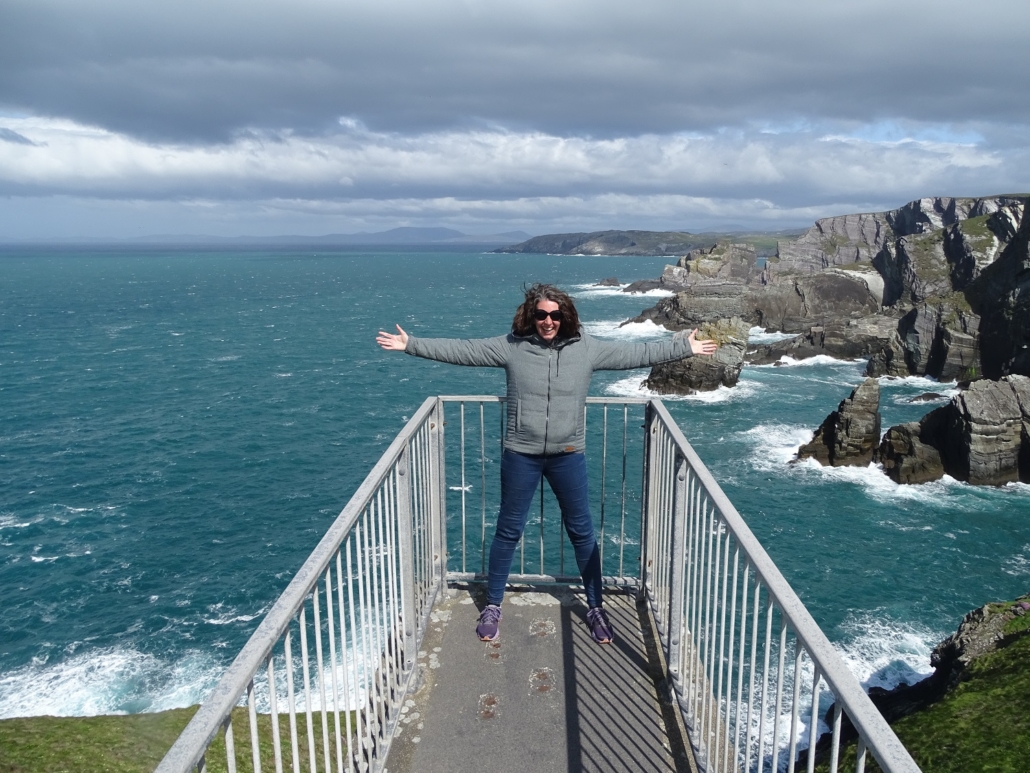

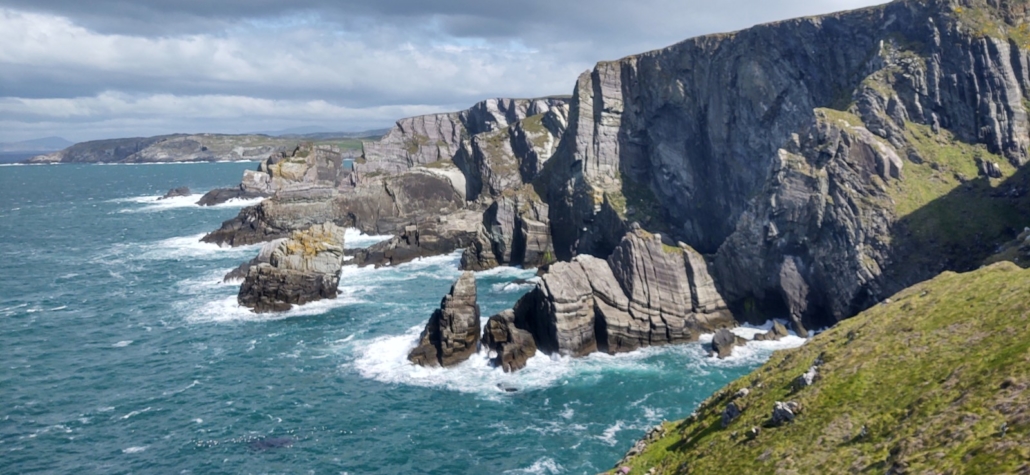

5. Only the Disposing of Rubbish Was Awkward
With Lidl, ALDI, SuperValu, Centra and even the odd Tesco spread around we’d no trouble buying groceries. There were enough LPG refill places (we only filled up once in Killarney) and we found there were sufficient aires, service points and campsites open in May to allow us to easily service the van. Some petrol stations and supermarkets have washer-dryers outside, making clothes washing easy. Disposing of rubbish in Ireland is a tad more difficult though.
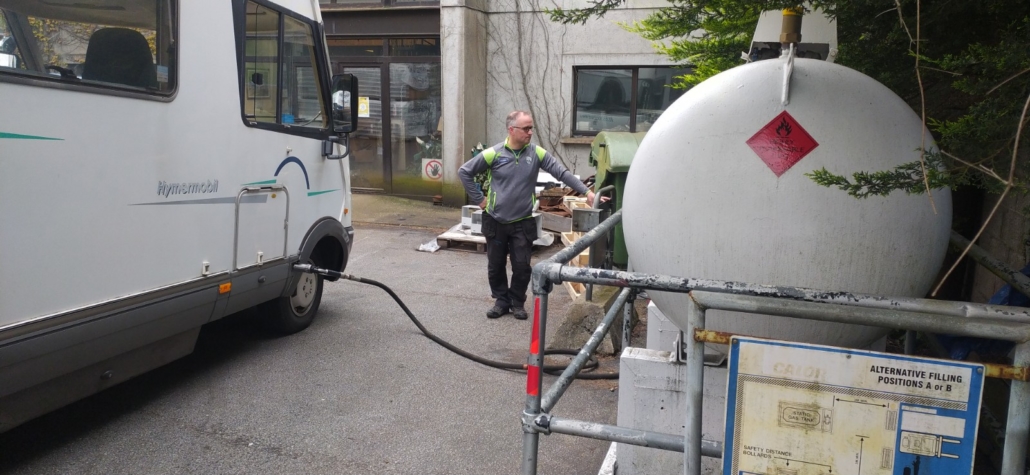

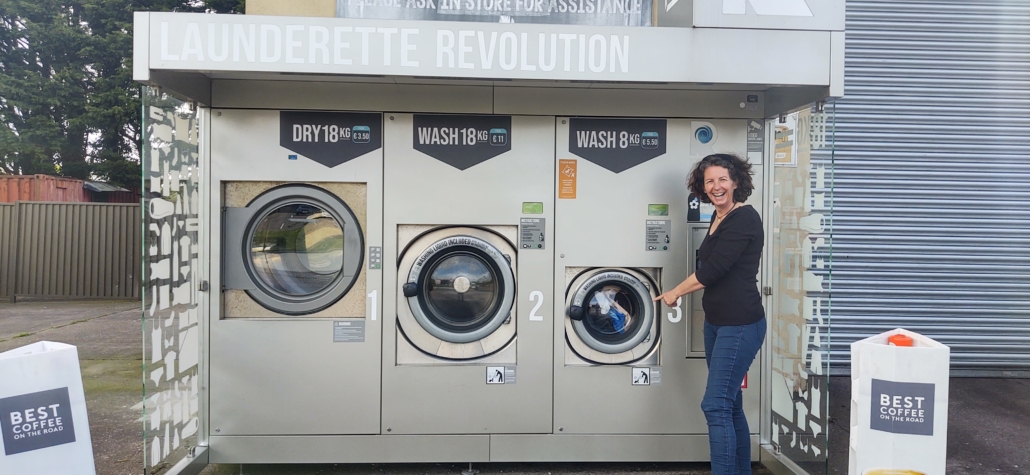

There are recycling points for glass and tins but not for plastic, cardboard or general waste. In the Republic the locals have to pay to dispose of each bag/bin of rubbish, so there are no large industrial bins knocking around town. You either have to squeeze your rubbish into a bin intended for litter (frowned upon and you could be fined if caught), go to a campsite which has bins (not all do) or pay for each bag to be taken at a recycling centre or some campsites.
6. The Roads Are, ah, Interesting
We used a few motorways in the Republic of Ireland and they were great quality and generally free. We used a couple of toll sections which only cost €2 each (you can pay by card or cash at the manned booths). We also paid for the toll bridge in Dublin to get to the port from the south (€1.70 in cash). There’s a section of the M50 around Dublin which has to be paid online, but we didn’t use it (www.eflow.ie). We also didn’t use the tunnel to Dublin port from the north, but heard it varies in price depending on the time of day up to €10.
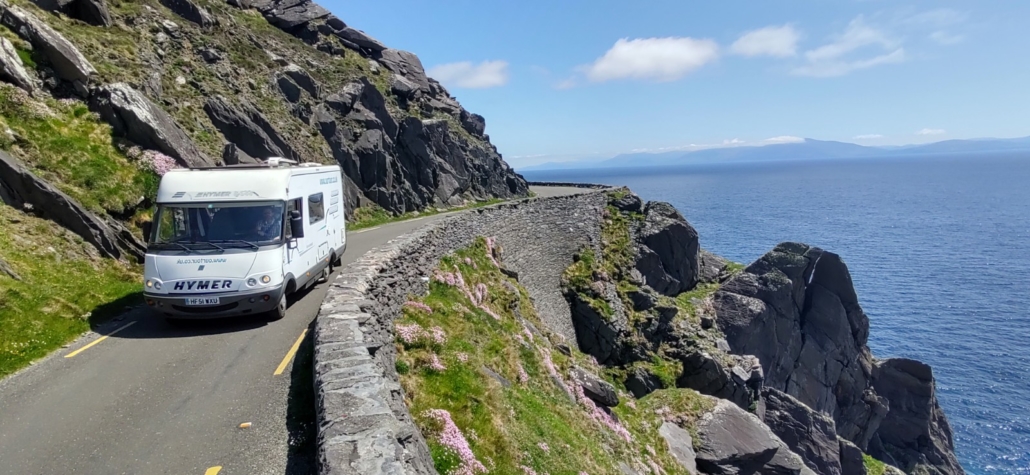

Away from the motorways, the Republic’s roads are classified as N (equivalent to a UK A road), R (like a B road) and unclassified roads (country lanes). Some of the R roads were hard work in a motorhome. They often have high hedges so you can’t see ahead, and are 80kph (around 50mph) so not exactly slow.
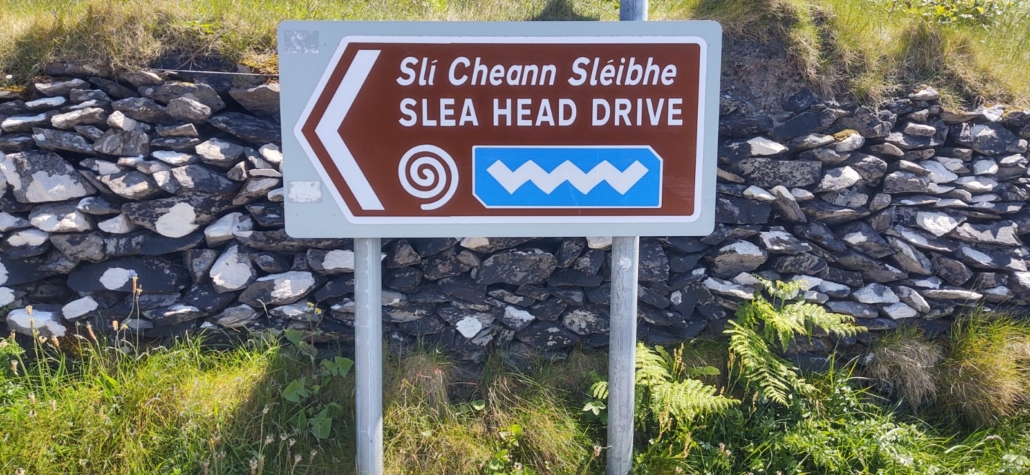

The small roads are no worse than similar rural roads in the UK to be fair, and out on the coast we found they mostly had very little traffic in May. On the relatively rare occasion we were holding up a car or two, we’d pull over where safe and let them pass. Invariably we were given a quick honk of the horn or a flash of the hazards as thanks.
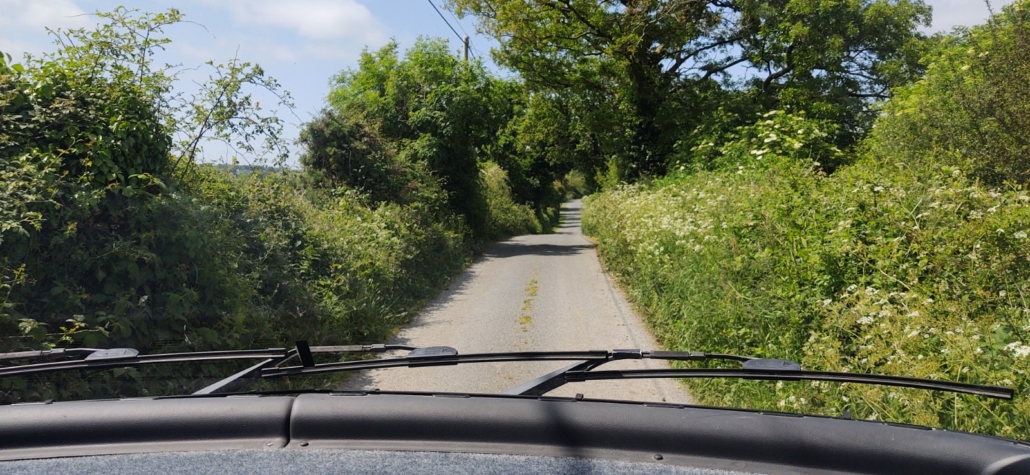

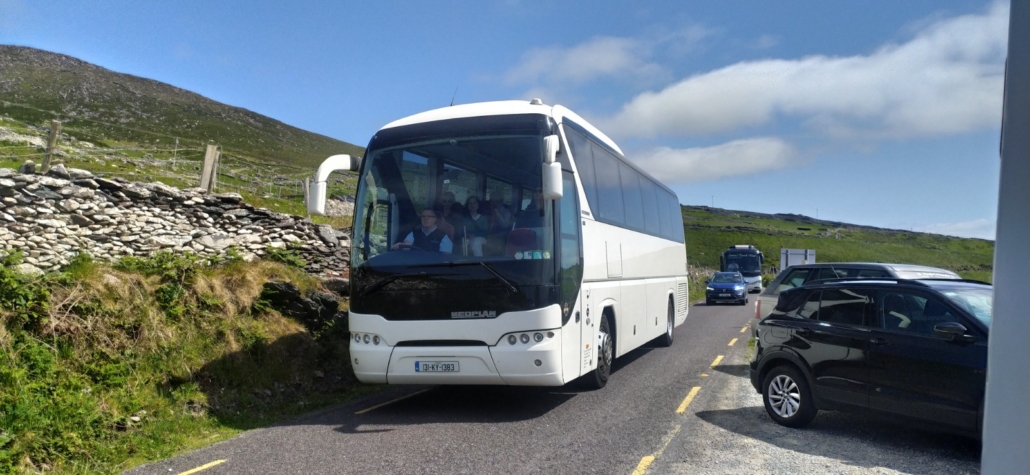

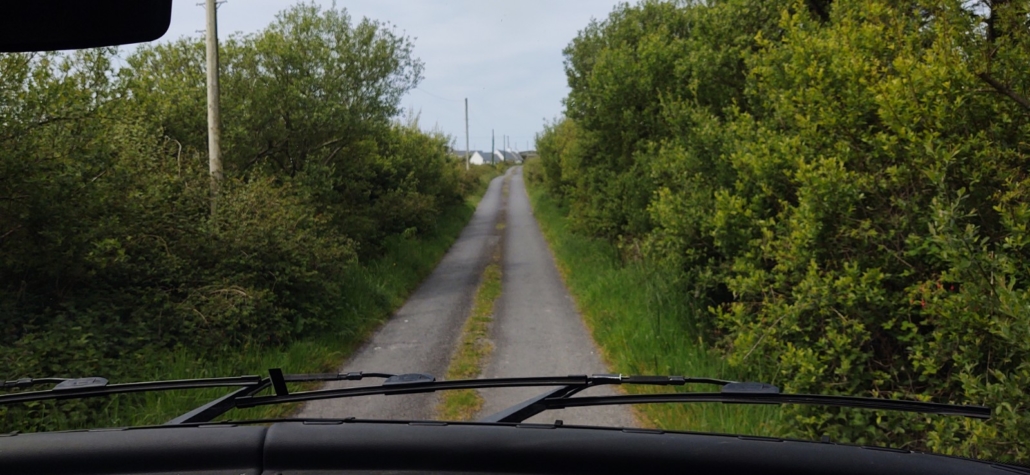

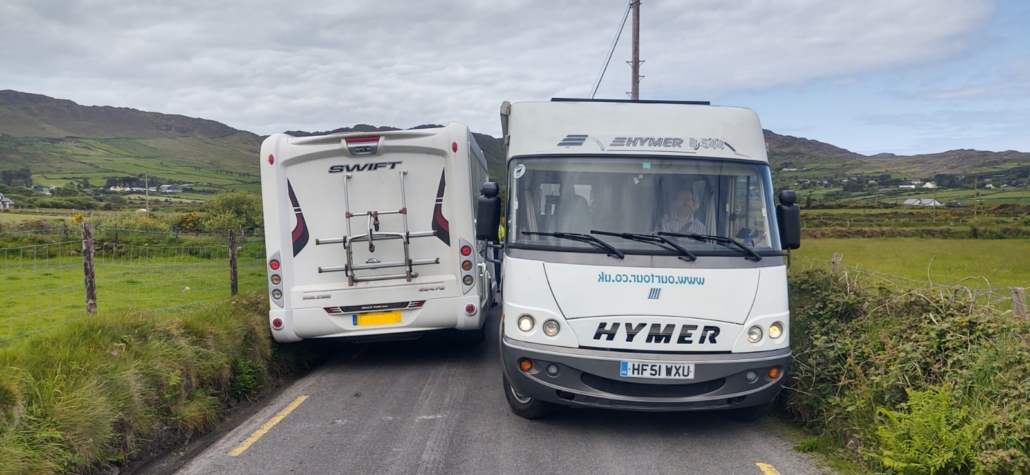

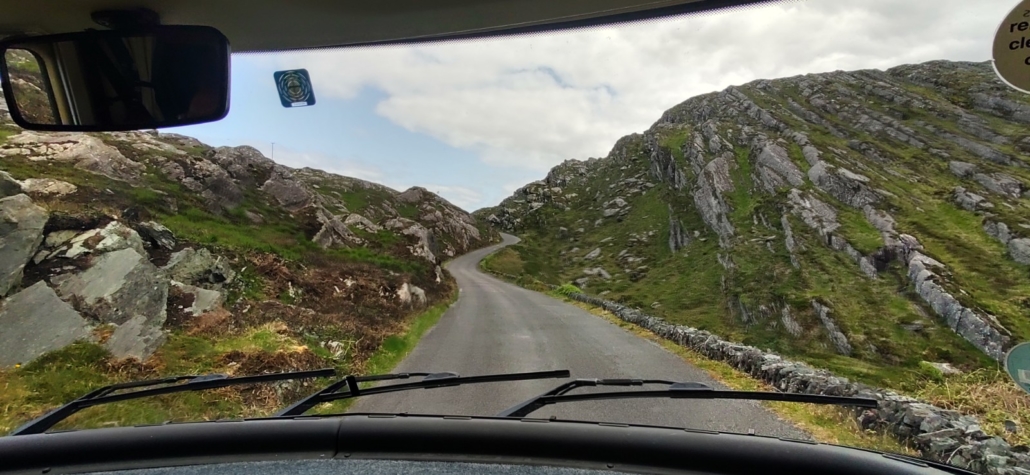

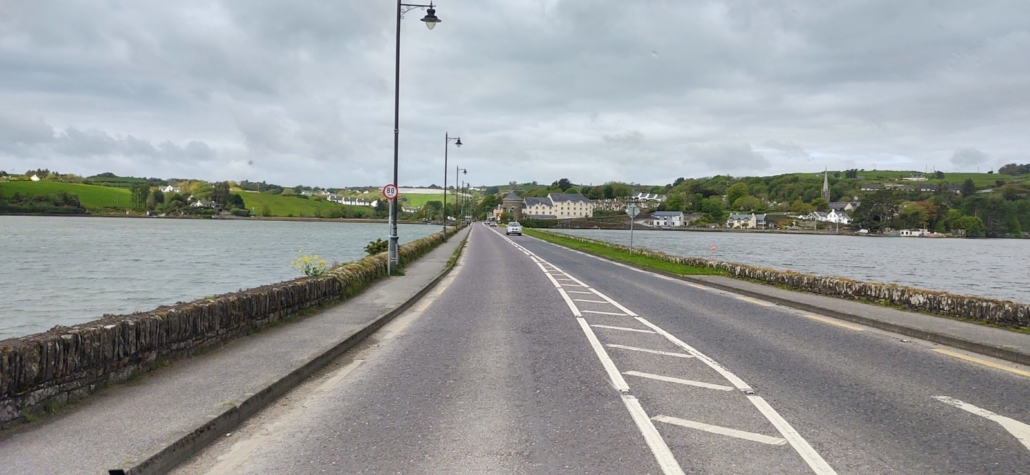

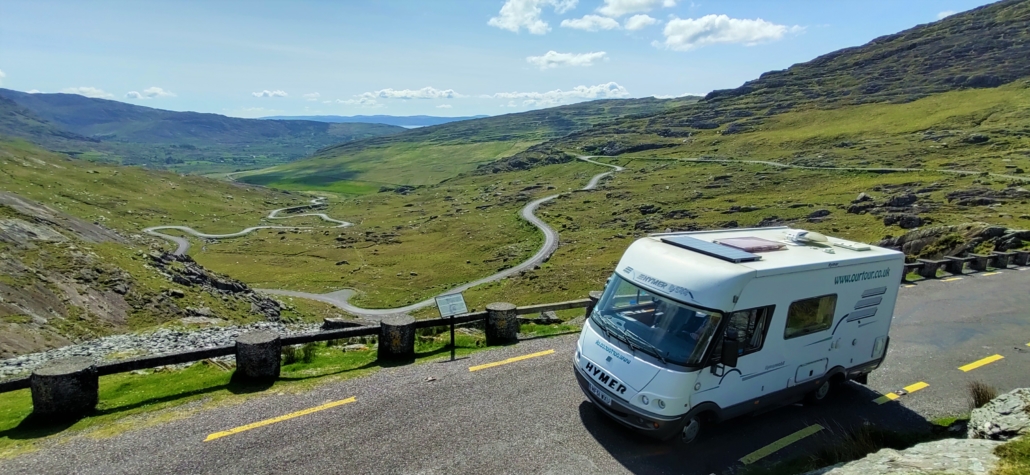

A few words of warning though folks: 1. Pack everything in tight, there are long sections of very rough surface, enough to shake your fillings from your teeth! 2. Drive the Dingle Peninsula clockwise to avoid long reverses in the face of full-sized coaches. 3. We were recommended to drive the Ring of Kerry anti-clockwise for the same reason, but we went the other way and had no issues, the roads are generally wider. 4. Don’t drive over the Gap of Dunloe or the Connor Pass unless you’re sure your van will fit!
7. There’s Fantastic Hiking, But Few Minor Trails
The Republic doesn’t have the same right of way system for walkers that we have here in the UK. There are top-notch, way-marked long-distance paths across Ireland, and we enjoyed a few short sections on them. But they’re not rights of way, the landowners have given permission for them to be used, there’s no legal right.
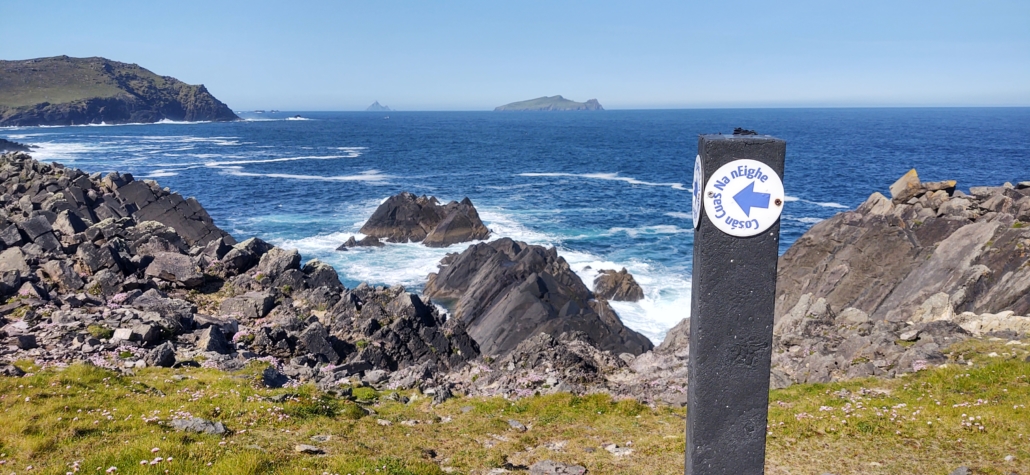

Away from these routes there are relatively few small trails and paths knocking about. We often found ourselves walking down busy roads to get anywhere away from the centre of a town or village, as there were often no pavements, or footpaths through the fields. There’s more info on walking in Ireland here: www.citizensinformation.ie/en/travel-and-recreation/sport-and-leisure/walking-and-rambling-in-ireland.
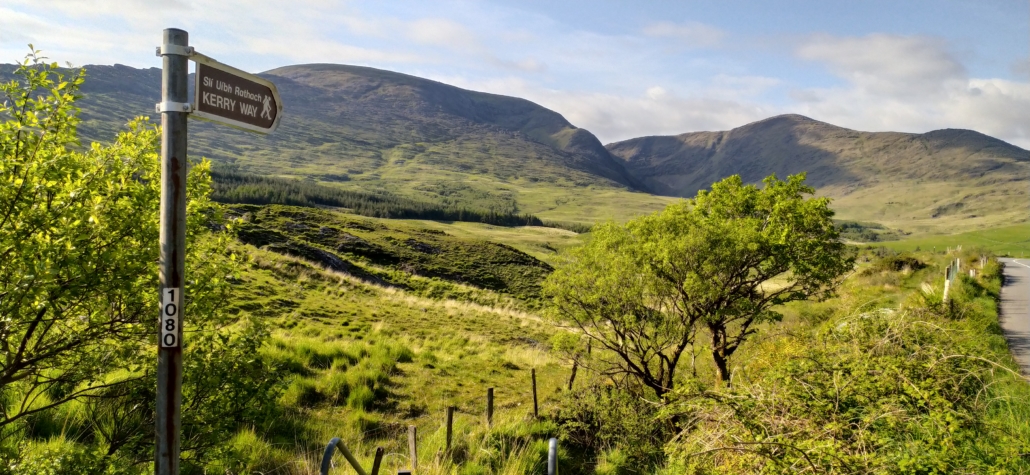

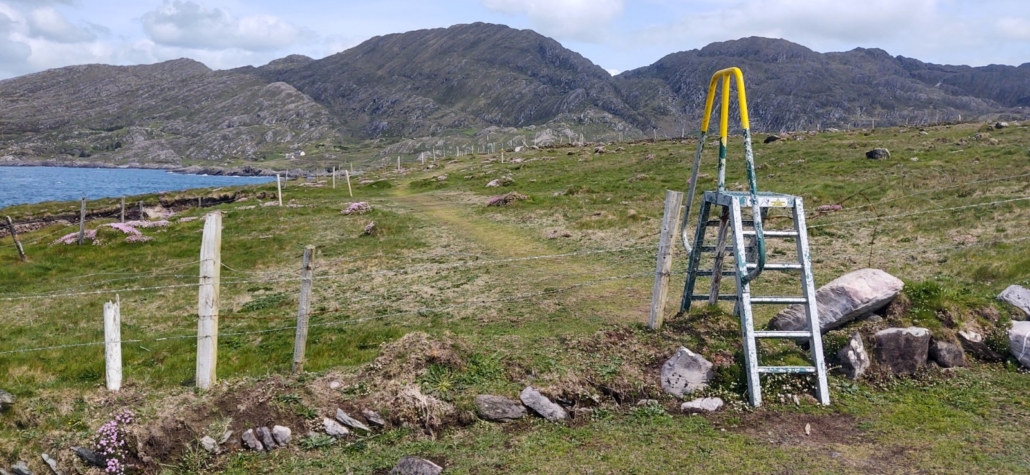

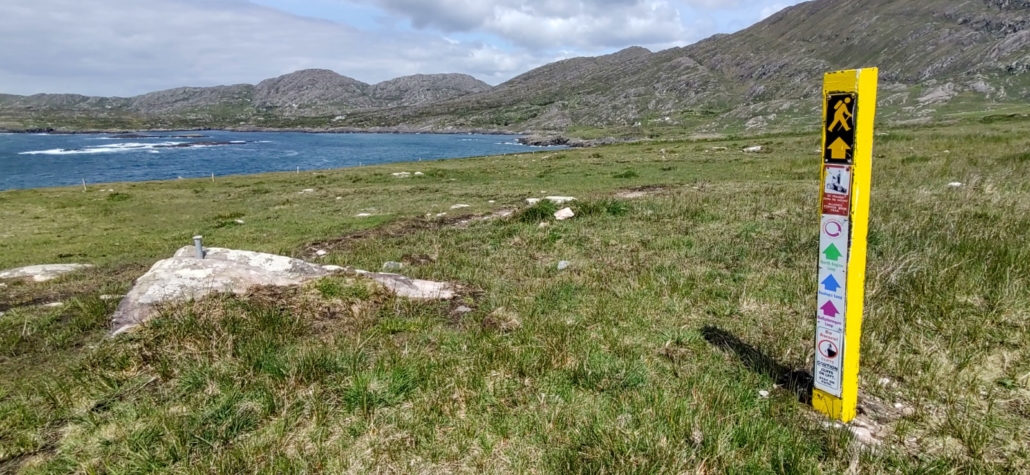

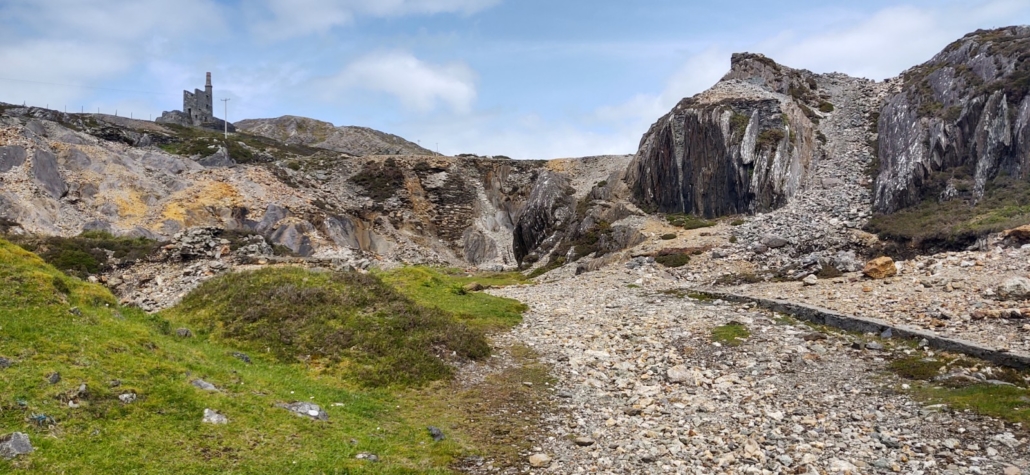

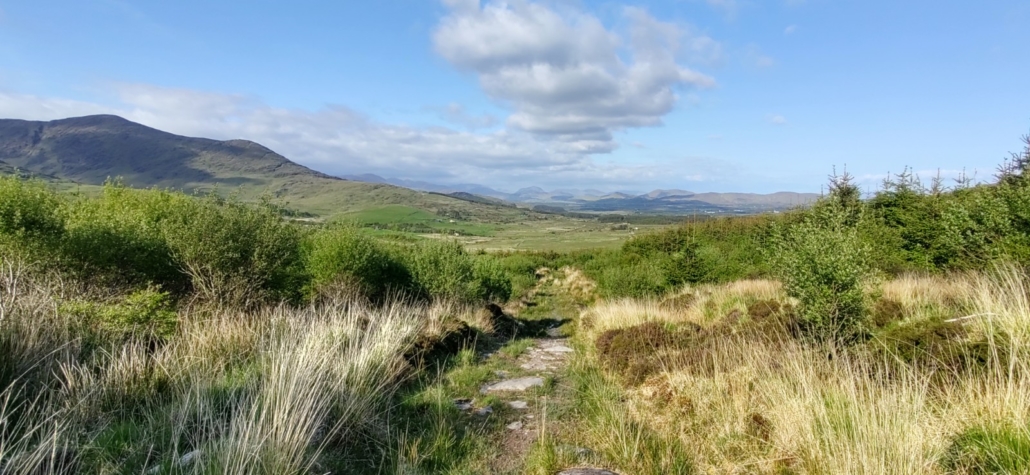




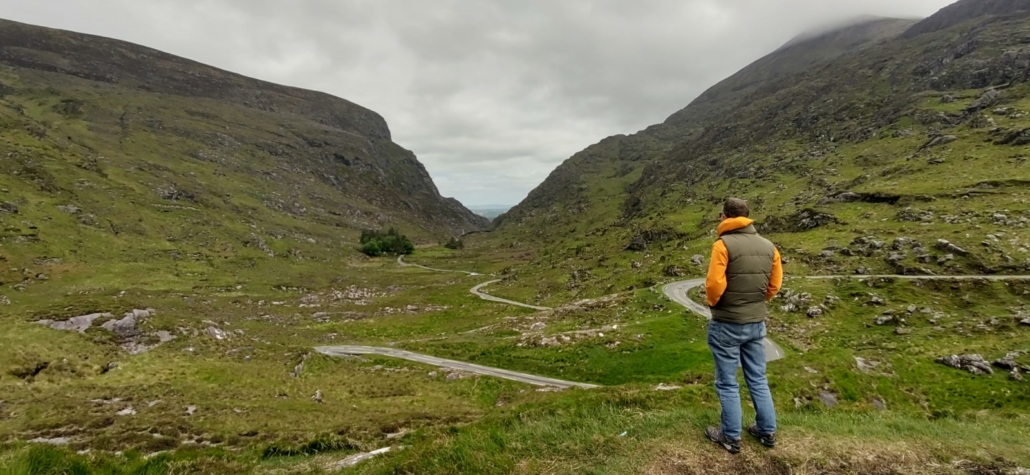

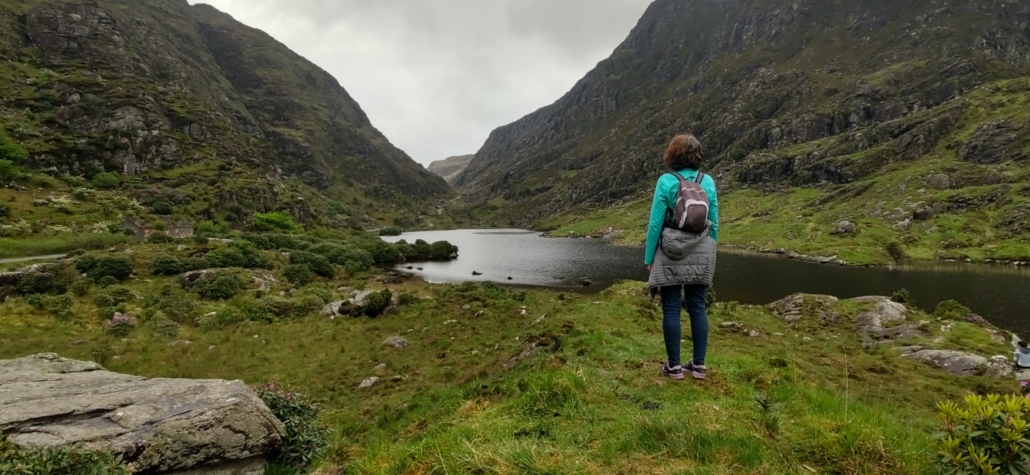

8. We Really Enjoyed the Irish Parkruns
Not for everyone, but if you enjoy the chance to get together with the locals for a free, safe, friendly 3 mile walk, jog or run, then Parkrun is well worth investigating. See the Ireland Parkrun site for information and locations: www.parkrun.ie. We did Parkruns at Kilkenny, Bere Island and Inch Beach, and all were memorable places with friendly locals to chat with.
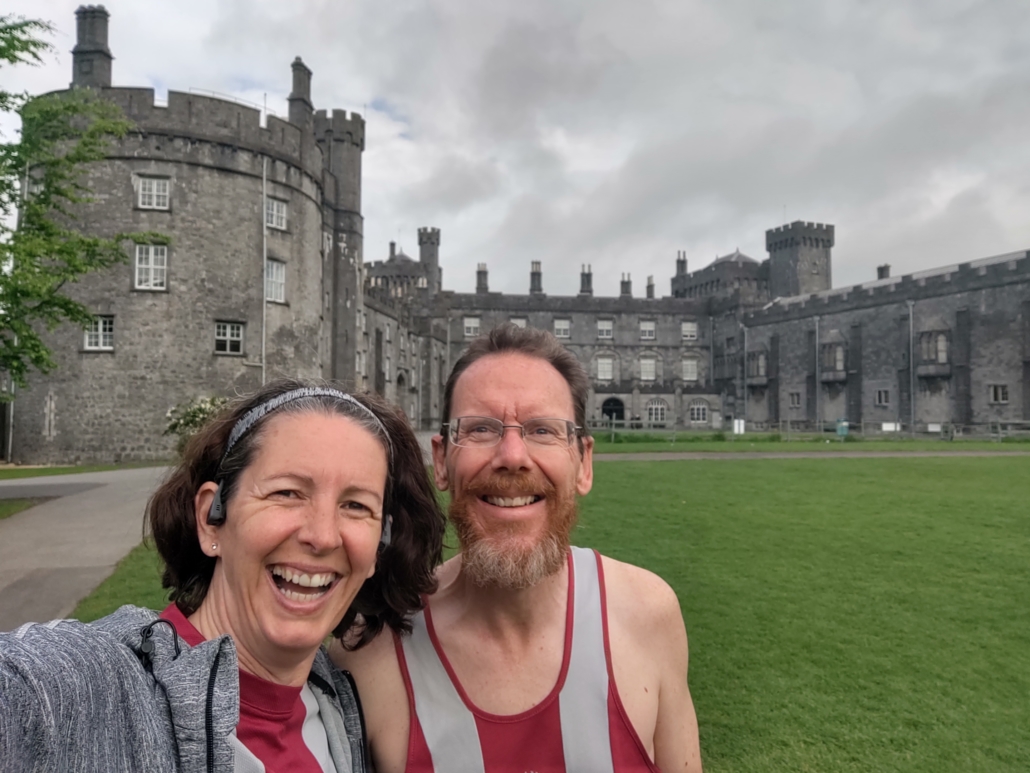

These take place every Saturday morning at various locations at 9:30am in Ireland (9am in Britain). You only need to sign up once on the website (for free) and get a barcode on your phone, or print it off. Bring it with you on the day and that’s it, nothing else to do, just turn up 10 mins before the start. Each event has a tailwalker or two who walks at the pace of the slowest person, so no-one gets left behind and you’ll never be last.
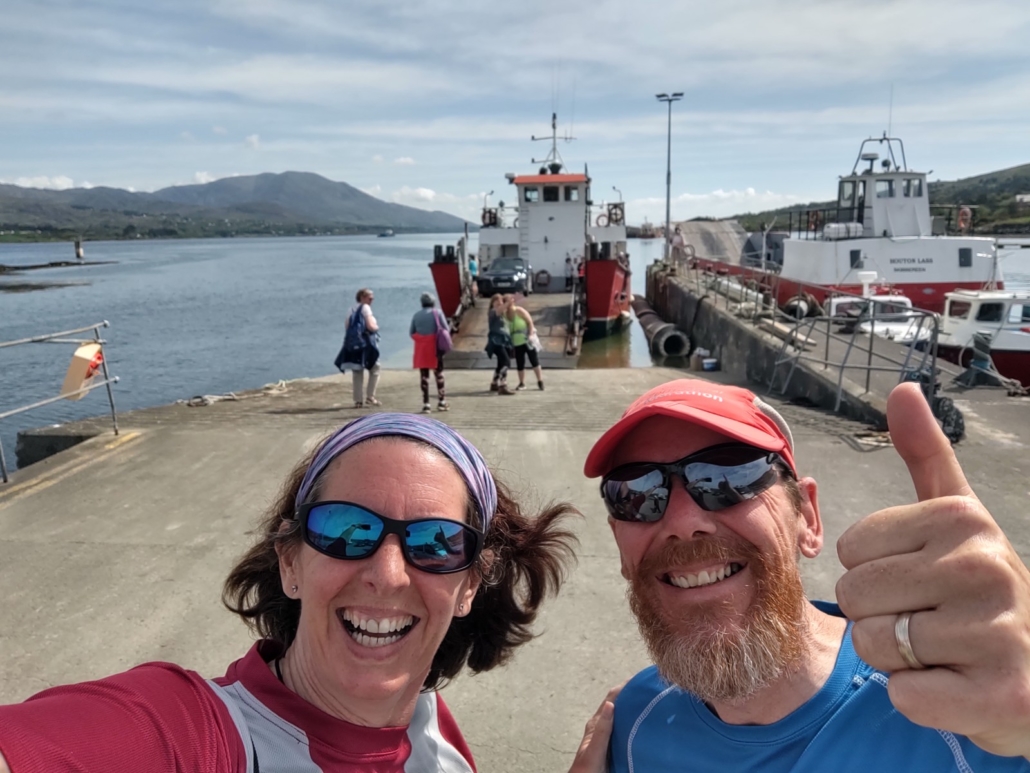

So, that’s our Ireland adventure done for now. It’s definitely a place we’ll head back to. Like a mini-Norway in places, but a lot closer to home! It also felt a little like the west coast of Scotland to us, with a rugged, remote feel while at the same time still being accessible to a motorhome.
The Money Stuff
Motoring
From our home in Nottingham and back we covered just over 1300 miles (2100 kilometres).
We filled up with diesel six times at a total cost of £344.54. We arrived home with an empty tank having used 259l of diesel.
Fuel prices ranged from €1.449l to €1.509l (we used the pumps.ie website get an idea of prices in the area and filled up when we saw it cheap, not when we started to run low.
Overnight Stops
7 nights wild/free camping in Ireland and 1 in Wales (Fishguard by the ferry port)
2 nights in pub car parks (we bought meals for around €40 for two including drinks)
9 nights on paid aires (prices were around €10 a night, but some had services, others were pretty much just a car parks)
2 nights in a free aire/dedicated motorhome parking – no services
9 nights on campsites (prices ranged from €15 to €38.50 for a campsite in Killarney with hook-up, bins and laundry)
2 nights on Camping and Caravan club Temporary Holiday Site (£14.50 per night) in Anglesey, Wales as we didn’t want the trip to end.
In total we spent £379.94 on overnight stops (two of which included meals). An average of £11.87 per night.
Food
We spent £257.74 in the supermarkets and £179.78 eating out (includes drinks, ice creams etc but not the two meals out which are included in the overnight stop costs).
It felt like the supermarkets were more expensive than at home, which may have been due to the price being in Euros so look slightly higher. We tried to do most of our shopping at big supermarkets, but did the odd top up shop in small stores and petrol stations, all of which have a good range including hot food and ice creams.
Communication
We bought an unlimited data SIM card from a 3 store for €20 the day after we arrived, which lasted us until we left Ireland.
Ferry
Stena Line: Fishguard to Rosslare £204, Dublin to Holyhead £186.
We booked both ferries a couple of weeks ahead of travel using the Camping and Caravan Club website which got us a flexible ticket for the price of an economy one. With hindsight, we’d probably just use the Dublin to Holyhead crossing both ways in the future and perhaps look at booking a return to see if we get it cheaper.
Other Big Costs
Zagan’s leisure batteries started to boil on hook-up one morning, so we decided to replace them both rather than try to manage the rest of the trip on just one. Two x 75 amp hour batteries cost €320 (£279) quite a bit more than they would have cost in the UK.
Total
Our 32 night trip cost a total of £2019.84 which includes two new leisure batteries.
Without the batteries it was £1740.68 or £54.40 a night. We’re both really suprised how little our average daily cost has gone up since we toured Europe for a year in our motorhome back in 2016.
If you’ve any questions about touring Ireland by motorhome, please just pop ’em in the comments. We’ll answer them if we can folks.
Cheers, Jay

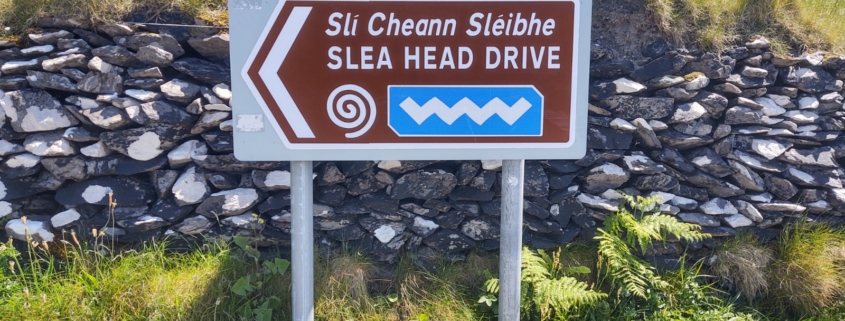


Good synopsis and pretty much our experience as well. Of course we’re still in the middle of it, and just starting the Dingle Peninsula this week. But yes… lots to see, and one month is not nearly enough. In fact we’ve already decided that we’re going to cancel our planned time in Scotland and head right to Wales from Dublin the way you did. By the way, we have some trash to get rid of…
Great blog Jay, thanks for sharing. We run a caravan at the moment but this article is further persuading me to find one of Zagan’s relatives to tour us around UK and Europe. Keep on touring and blogging mate.
Thanks Rob, big decision that, happy travels whatever you decide fella, Jay
Great “trip report”!
Slán go fóill!
Paddy
Cheers Paddy 👍
Thanks for a very useful blog. We are heading off to Ireland late August for 3 weeks – our first “big” trip since we bought our motorhome last year. We are going with friends who are very experienced motorhomers. Planning on a similar route to you but the other way round. Holyhead to Dublin then heading over to Doolin and working our way south. Hoping to fit in a couple of park runs along the way (just done Alvaston in Derby this morning!)
👍 happy travels and parkrunning Kay! Cheers, Jay
Hi, we are planning a trip to Ireland starting mid April for a few months we enjoy reading your blog and are looking forward to going, did you have to have continental breakdown cover and heath insurance for southern Ireland ?
Thanks Hilary
Hi Hilary – our breakdown insurance was already in place and covered the EU, so we didn’t check but I would imagine UK cover won’t work in southern Ireland – worth checking with your insurer. We bought travel insurance for the trip which covered the EU. Cheers and happy travels, we really enjoyed Ireland. Jay